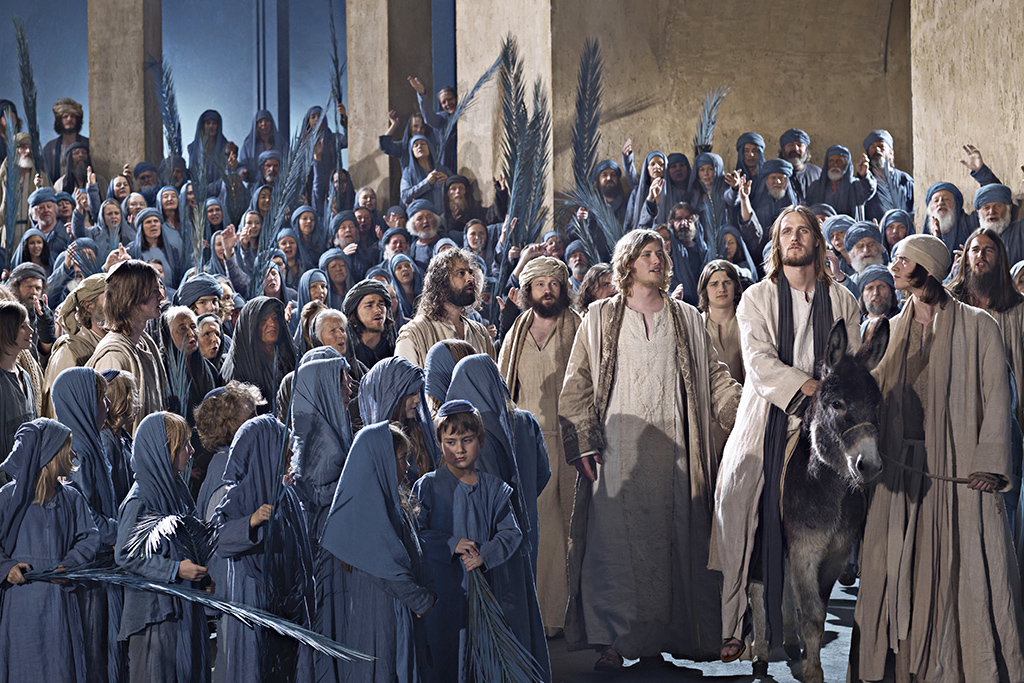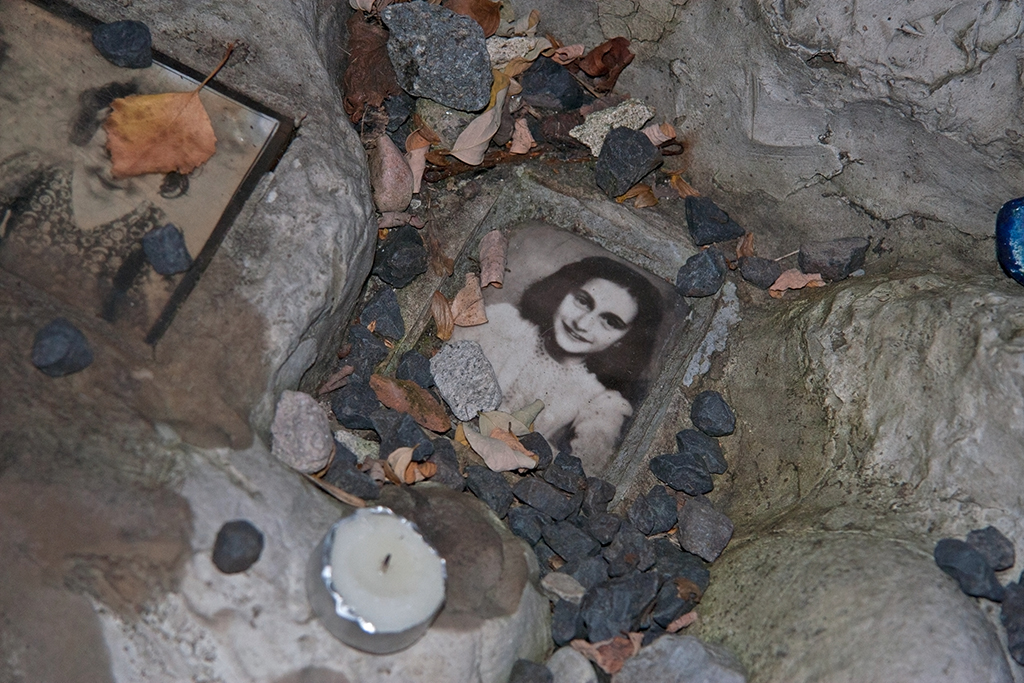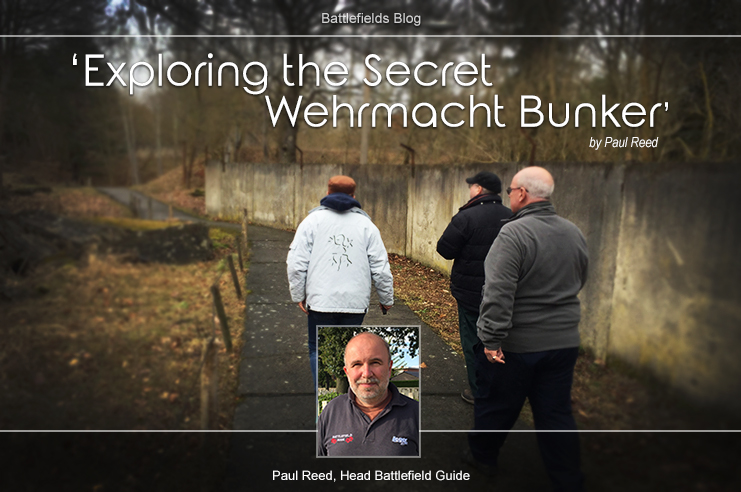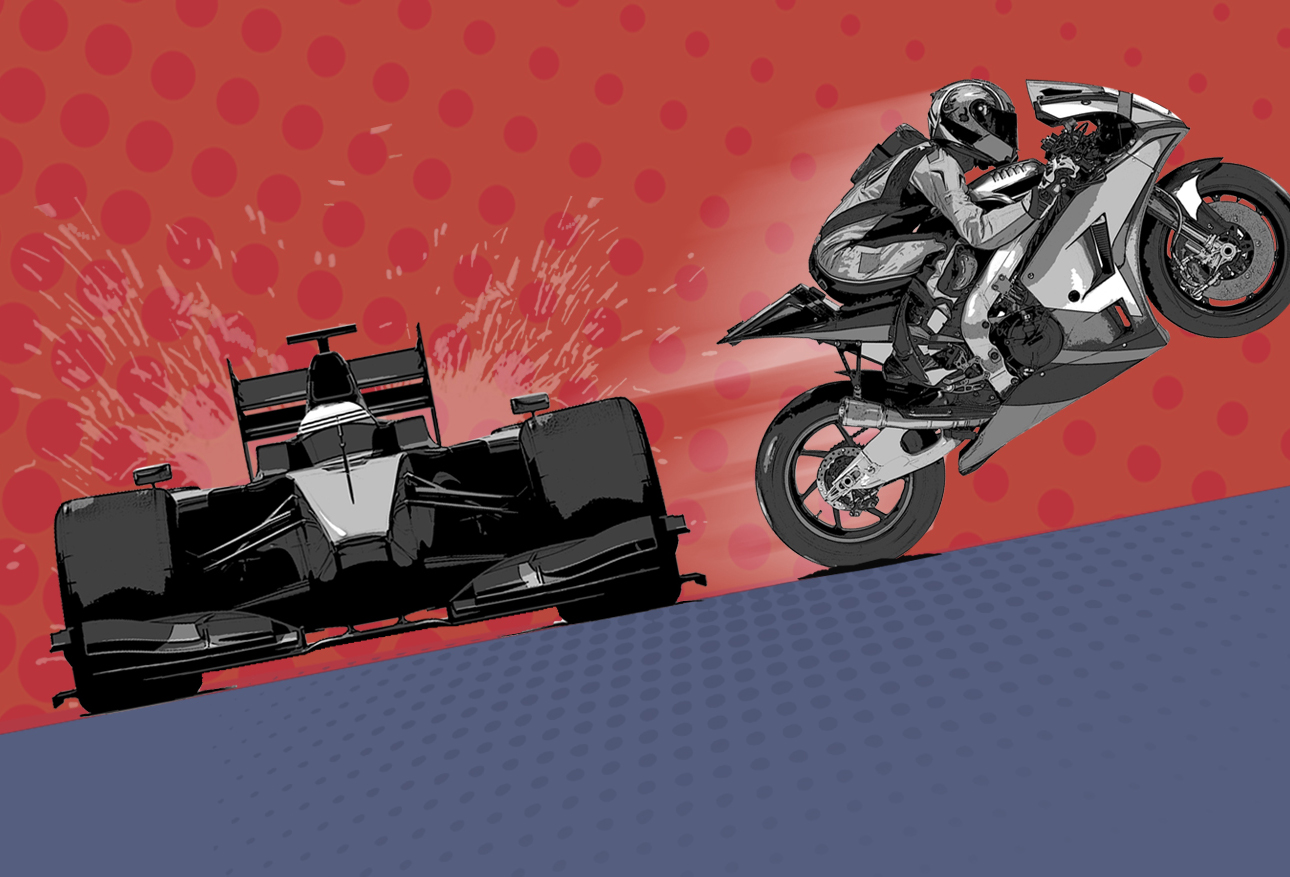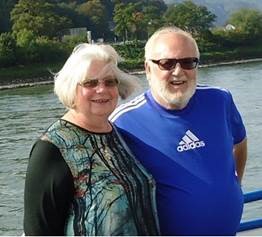 Having booked our three holidays for 2017 we usually sit back and await the perennial questions that always follow our holiday bookings. One question is always ‘Why don’t you fly to your holiday destination? Well if we wanted to fly on our holidays we could easily pick one of Leger’s many ‘Fly’ holidays but we prefer to go by coach. Once again the question arises ‘Why’ well for a start we only have to walk to our ‘Pick up Point’ – hand over our suitcases to the Driver and we never have to worry about them again until they appear outside our Hotel door. As I am getting older this is a big feature nowadays. Plus there is no having to get to the airport several hours before take-off – sometimes we’re told it’s easier to book a room at a nearby hotel so as to get to the airport on time. For us – our transport arrives – we get on and our holiday starts immediately.
Having booked our three holidays for 2017 we usually sit back and await the perennial questions that always follow our holiday bookings. One question is always ‘Why don’t you fly to your holiday destination? Well if we wanted to fly on our holidays we could easily pick one of Leger’s many ‘Fly’ holidays but we prefer to go by coach. Once again the question arises ‘Why’ well for a start we only have to walk to our ‘Pick up Point’ – hand over our suitcases to the Driver and we never have to worry about them again until they appear outside our Hotel door. As I am getting older this is a big feature nowadays. Plus there is no having to get to the airport several hours before take-off – sometimes we’re told it’s easier to book a room at a nearby hotel so as to get to the airport on time. For us – our transport arrives – we get on and our holiday starts immediately.
Even on our ‘Feeder Coach’ – on our way to Dover to catch the ferry or travel through the Channel Tunnel – we immediately join in the ‘What time did you get on the coach this morning’ competition with our fellow passengers with ourselves usually winning as North Wales – where we live – is quite a way from Dover.
I think camaraderie is a big feature of Leger Coach Holidays and once on your Tour Coach heading towards your holiday destination we are already sizing up all those on board to see who appears to be likely candidates as to who we will joining for our meals and more importantly who we are to socialise with when relaxing in the Bar in the evening. We have been on 31 Leger Holidays over 23 years – and will be adding another three holidays this year.
Another question that usually arises is ‘Why Leger – why not another Company?’ Well over the years we have been on other companies coach holidays but we always find ourselves coming ‘Home’ to Leger. It’s not to say that these ‘Other Companies’ holidays are not good – they are – but we find ourselves missing certain features that you get from Leger.
Features like friendly Drivers who when you see who your Drivers are when you board your Tour Coach you immediately say ‘Oh this is going to be a good holiday – we have had these two before’ or ‘ These Drivers are a good laugh’. Its little things that matter like when your Drivers come around the Dining Room to chat to everyone to see that everything is OK and you don’t have any problems. Over the years on the two occasions that we had a small problem and informed the Drivers about it – the problem was sorted before we got up from the table – now that’s fast. It’s important that the Drivers are there for you – more or less in the background but never intrusive until they need to be.
We love all the Excursions – both Inclusive and Optional – as you get to see places that if you travel by your own means you are inclined to miss out on. Last year we eventually persuaded two of our friends to go to Lake Garda but they made their own way there. When they came home we were interested in what they had seen and what they enjoyed and yet whilst they really enjoyed their holiday at Lake Garda – how could they not enjoy it – when we said about visiting various places that we love – they had to admit that they had not been there as local transport made it a bit difficult whereas our Leger Coaches take you to all the main important locations and drop you right there.
Fi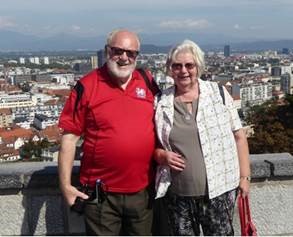 nally back to the camaraderie. We have always ‘made friends’ with people on the coach and in some cases made good friendships that have lasted years. We are in regular contact with two couples one who originally first joined us at our meal table on a previous ‘Lake Garda Holiday’ and the other we similarly met on our ‘Sorrento Holiday’ – they socialised with us for the duration of our – and their – holiday and we chat – via e-mails – on a monthly basis with irregular long mailings in between.
nally back to the camaraderie. We have always ‘made friends’ with people on the coach and in some cases made good friendships that have lasted years. We are in regular contact with two couples one who originally first joined us at our meal table on a previous ‘Lake Garda Holiday’ and the other we similarly met on our ‘Sorrento Holiday’ – they socialised with us for the duration of our – and their – holiday and we chat – via e-mails – on a monthly basis with irregular long mailings in between.
And that is why we love our coach holidays.
David McCormack: Playboy, businessman, saviour, spy: Oskar Schindler's lesser known career with German Military Intelligence 1936-40
Oskar Schindler’s name became known to millions following Liam Neeson’s brilliant 1993 on-screen performance as the larger-than-life character in Steven Spielberg’s Schindler’s List. Whilst this beautifully crafted film captured Schindler’s shrewd opportunism and supreme confidence, it did not satisfactorily explain his conversion from casual war profiteer to selfless hero.
This is entirely understandable, given that the film was based on Thomas Keneally’s book Schindler’s Ark (1982), which only briefly touched upon some of his pre-Krakow activities. Those activities included his direct involvement in espionage and undercover operations carried out by German Military intelligence (Abwehr) between 1936 and 1940.

Given the nature of Schindler’s clandestine activities, it is hardly surprising that he remains a controversial and shadowy figure. According to Schindler’s own account, he joined Abwehr III Breslau in December 1936 after meeting the organisation’s chief, Admiral Wilhelm Canaris at a party. The unit to which he was attached principally dealt with code-breaking and radio monitoring.
Following reorganisation, his unit was redesignated as Abwehr II Breslau, tasked with carrying out espionage/counter-espionage and sabotage/counter-sabotage operations. During the fateful summer of 1938 which culminated in the Munich Crisis, he worked to provide Abwehr combat and sabotage teams with reliable maps and information on Czech troop movements and defences.
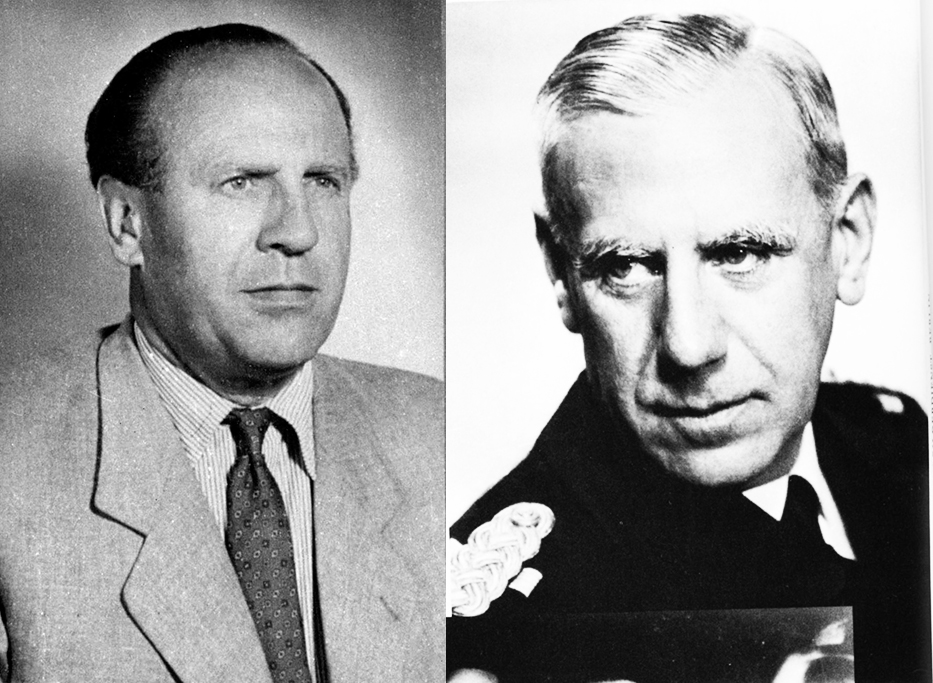
Schindler was a somewhat minor figure in Hitler’s plans to take over Czechoslovakia. Nevertheless, his activities did not go unnoticed by the Czech authorities. He was arrested on charges of espionage on 18 July 1938, tried and subsequently imprisoned. However, he was released early under the terms of the Munich Agreement.
Through much of August 1939, Schindler played a more significant role in Hitler’s planned invasion of Poland. Operating with Action Commando Unit VIII around the Sillein border region in Slovakia, Schindler smuggled arms and men across the border into Poland in preparation for clandestine combat operations. Later, he participated in operations to secure the strategically important rail tunnel and tracks which ran through the Jablunkov Pass.
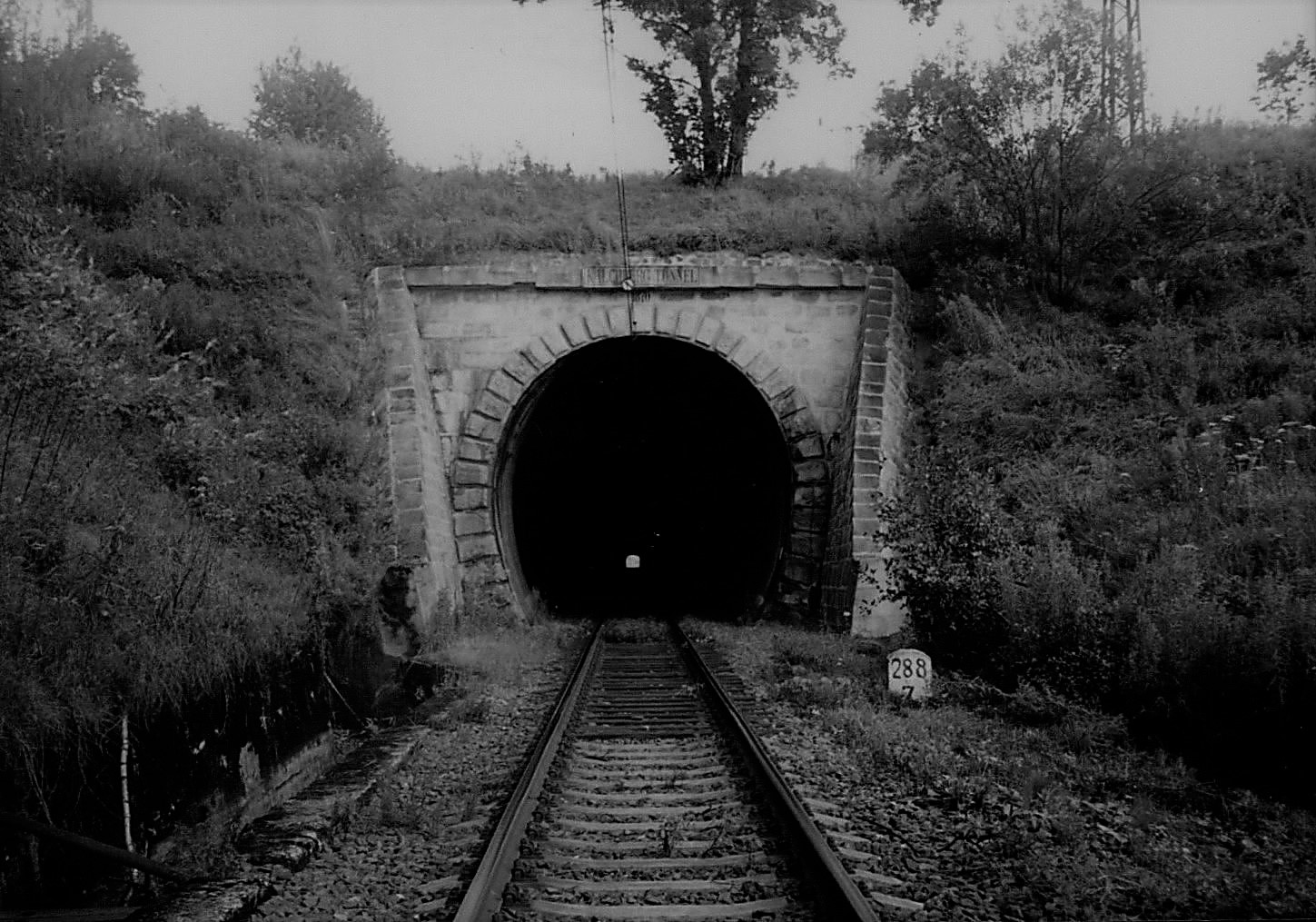
However, Hitler’s miscalculation regarding British and French guarantees to Poland led to the operation being hastily terminated as a result of his fear of provoking a general war. On 31 August, the carefully staged Gleiwitz Incident provided Hitler with his justification for attacking Poland. Schindler may well have had a role in procuring Polish uniforms for this SS orchestrated ruse de geurre designed to create the impression of Polish aggression along the German border. However, the evidence for his involvement is largely based on testimony from his estranged wife Emilie. As such, it needs to be treated with caution.
Following the occupation of Krakow by German forces in September 1939, Schindler moved to the city in the hope of resuming his business career. However, in reality, he never left Abwehr, as in 1940 he was sent on a mission to investigate difficulties affecting the flow of intelligence information from Turkey. It is also quite possible that his purchase of the Emalia factory was subsidised by his Abwehr controllers, who wished to use it as a front for their continued intelligence activities.

Working with Abwehr brought Schindler into close contact with some of the more unpleasant organs of the Nazi state. Consequently, he developed a distrust of the SS Security Service and the Secret Police, whose activities he regarded as beyond the pale. This distrust would later develop as a distaste for all aspects of Hitler’s terror state and would form the basis of the actions which led to him becoming the saviour of 1,100 Jews, who would certainly have perished without his intervention.
Unusual Place Names: Where in the World?
Unusual place names, they seem a million miles away… from the likes of Bunratty to Honningsvag, they’re the sort of destinations you’d have to grab at atlas to find out exactly where they are. And even then, it’s finding out just how far away they are can be pretty mid-boggling.
Well, the thing is, they’re probably closer than you think. We’ve put in some research and found some of Europe’s most unusual place names (and, funnily enough, we visit them on our tours too!) and have even found out just how many miles away they really are.
So, if you’re heading off on one of our tours to places you’ve not really heard of before, your unusual destination may just be on our list. Find out how far you’ll travel to get there with our fantastic new infographic.


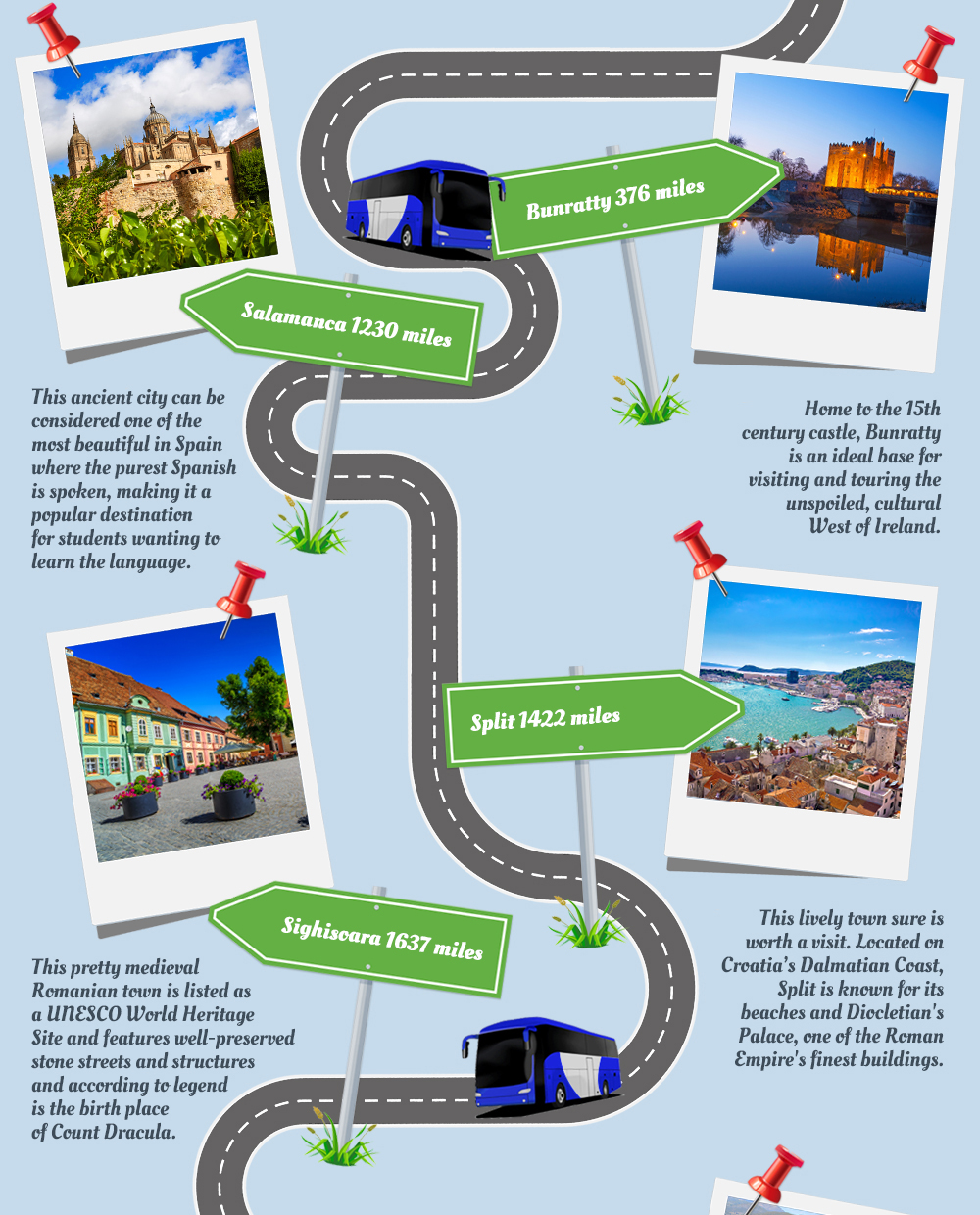
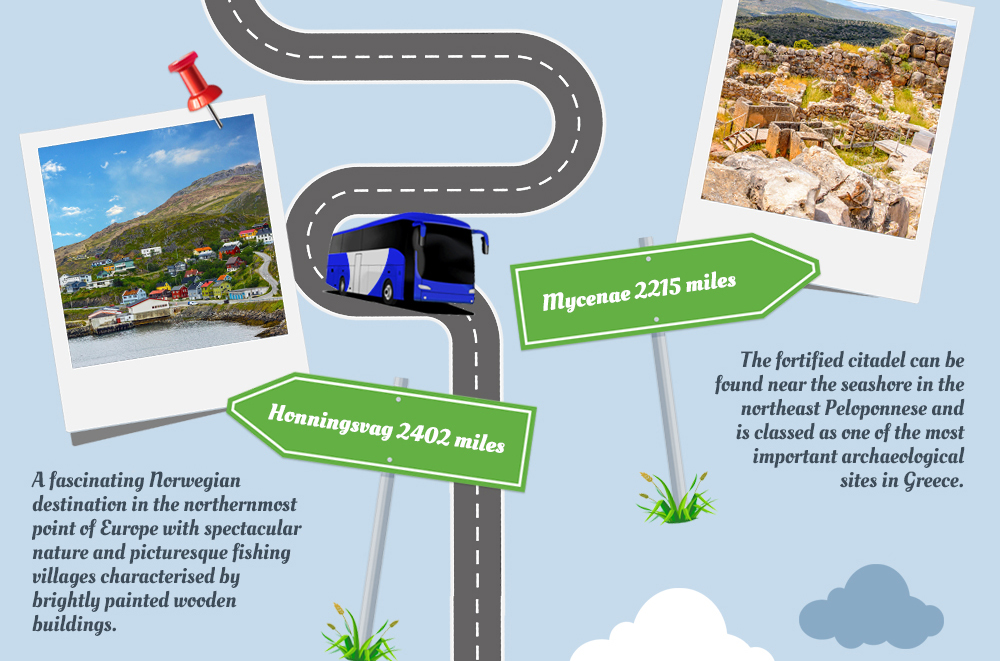


Oberammergau 2020: The World Famous Passion Play
Oberammergau, the German town nestled in the Bavarian Alps. It’s a stunning place to visit at any time, in fact, you may have seen it for yourself on one of our tours. But as we head towards the latter end of this decade, attention turns to one thing; The Oberammergau Passion Play.
The play will be back in 2020, marking its 42nd anniversary and it’s something that, here at Leger HQ, we’re really looking forward to.
It’s without a doubt one of our most popular additions, even though it only comes along once a decade! And, this year we’ve launched an exciting selection of tours taking you to the Passion Play along with exciting excursions throughout Germany, Italy and Austria. But, if you’re new to the play, or just wanting to learn a little more about it, here’s our beginners guide to the World Famous Oberammergau Passion Play…
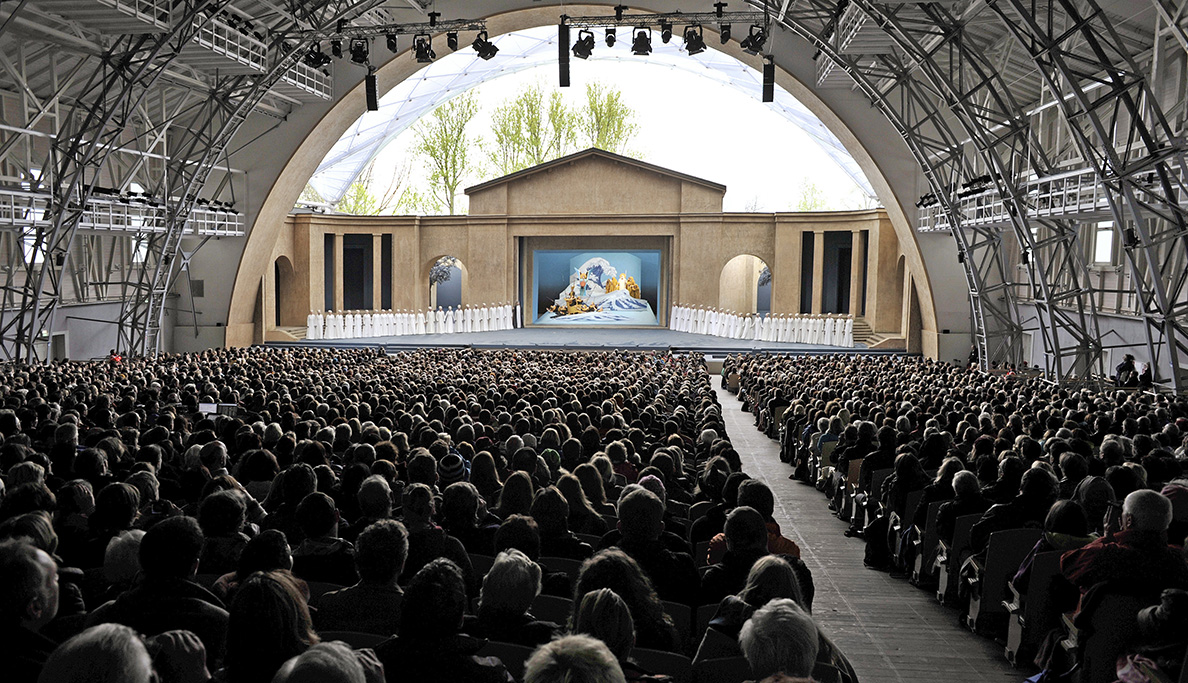
What is the Oberammergau Passion Play?
The Oberammergau Passion Play is a religious play of the Christian faith, depicting the life, death and resurrection of Jesus Christ.
When did it start?
It came in the middle of the 30 Years’ War – after months of suffering, and death, from the plague, the Oberammergauers swore an oath to God that, on the promise that he would spare them from the spreading plague epidemic, they would perform the “Play of the Suffering, Death and Resurrection of Our Lord Jesus Christ”.
And, it seemed to work. In fact, there were said to be 20 people in 1000 that were dying from the bubonic plague! And, following the oath? There were no more deaths, and all the townspeople suffering, recovered. The villagers believed they had been spared and, sticking to their word, the stage was built for the inaugural show that took place in 1634.
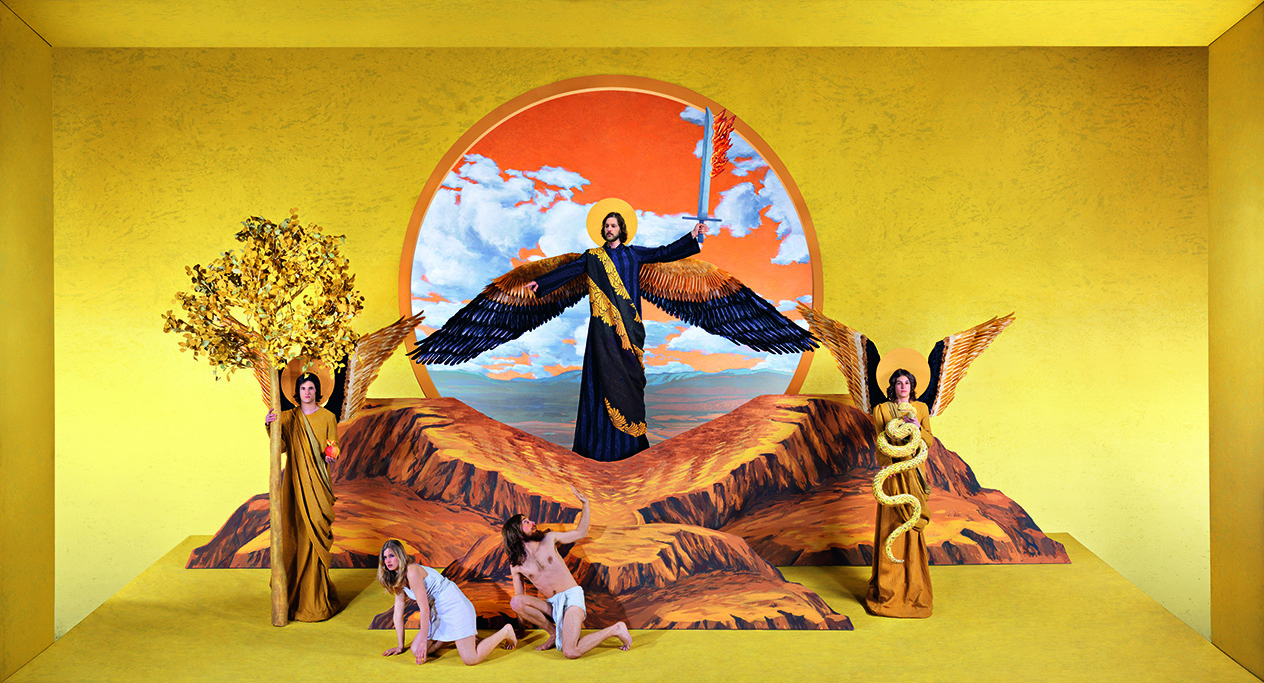
When is it performed?
The play is performed every 10 years, the last one being in 2010 and the next to be in 2020. It runs for five months, from May to October.
In 2010 alone, there were 102 performances that took place!
Who stars in the Passion Play?
The Oberammergau Passion Play is performed solely by the residents of Oberammergau – and that’s written in law!
With so many shows, and such a large cast, it means that over half of the town’s 4000 residents come together to fill roles from actors to singers, instrumentalists and technicians.
But, it’s all worth it, as the play attracts over 500,000 guests who come from all over the world to witness the Passion Play.
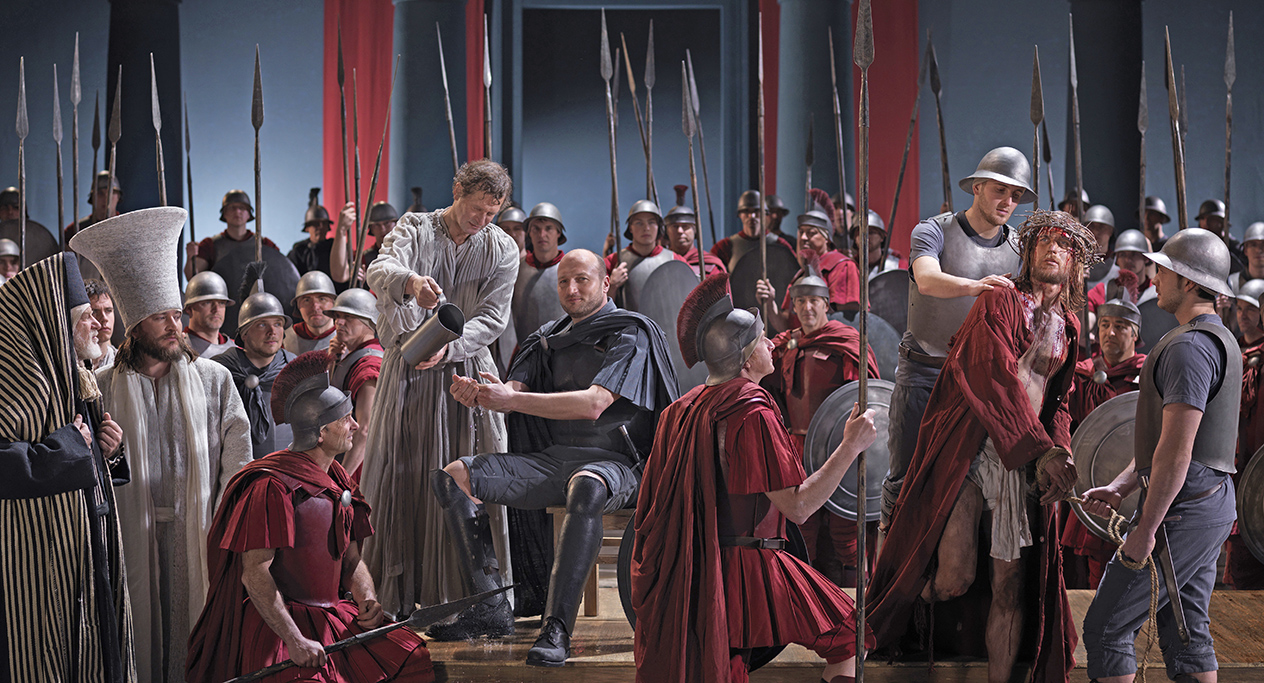
How much preparation is involved?
The groundwork for each Passion Play is meticulous. In fact, the preparations for 2020 are already well underway.
The production team was chosen back in 2015, the final schedule released this year and the cast will be announced by the Spring of 2019, just in time for the male members to adhere to the village’s ‘Beard and Hair’ edict that demands that all actors must start growing their hair and beards by Ash Wednesday 2019. No shaving allowed.
What should we expect?
From sombre beginnings, the Oberammergau Passion Play has thrived and since become a Bavarian triumph, enjoyed by hundreds of thousands of people. It’s a play that the locals take great pride in, so you can be sure that your experience will be the finest.
From the play itself, delivering powerful performances, inspiring spoken texts and incredible music, there’s a leisurely 3 hour meal break during the play that allows you to enjoy a host of Bavarian treats from bratwurst to steins of beer. Plus, Oberammergau itself offers a stunning back drop to this open air experience, not to be missed.
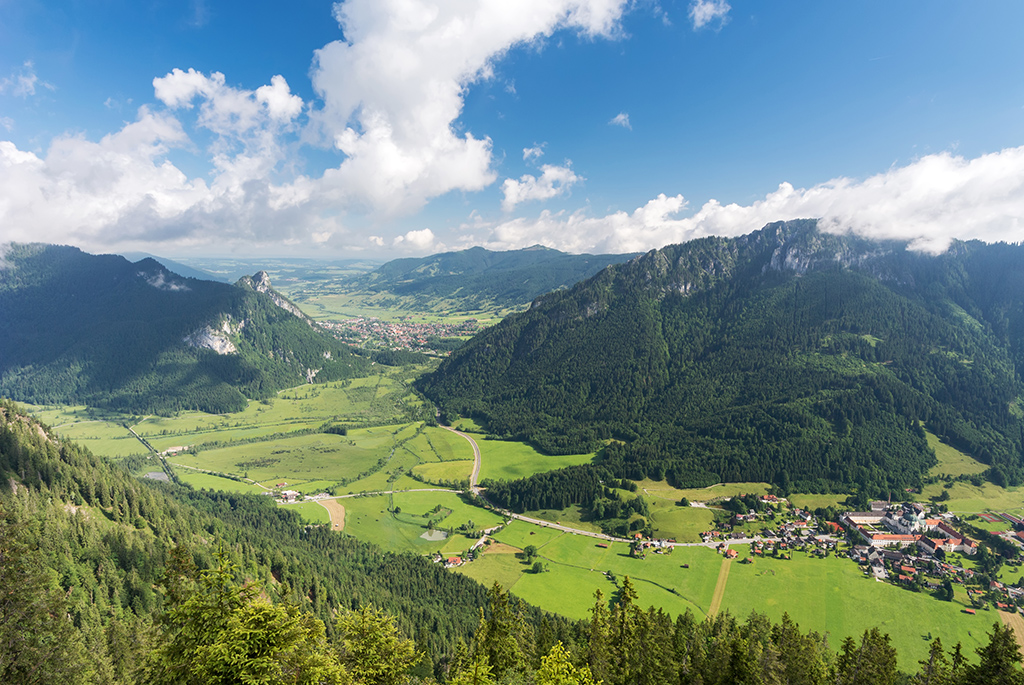
Take a look at our Oberammergau packages and book today to secure your place on this globally popular experience.
David McCormack : Who is Anne Frank?
This month marks the 72nd anniversary of the relief of Bergen-Belsen where more than 50,000 people perished through wilful neglect, including the young diarist, Anne Frank
Anne Frank’s posthumously published diary first appeared in print in 1947. Since then, it has become an international best seller, instantly recognisable to millions. Less recognisable, indeed largely unknown, is the posthumously published (1979) wartime diary of Etty Hillesum (An Interrupted Life), a young Dutch woman who was murdered in Auschwitz in November 1943.
Hillesum’s remarkable diary shares the same literary qualities as that of Anne Frank, which is hardly surprising as both aspired to be professional writers. Arguably, it is Anne Frank’s far more complex afterlife which has resulted in her much greater posthumous success and reinvention as a symbol of hope and forgiveness.
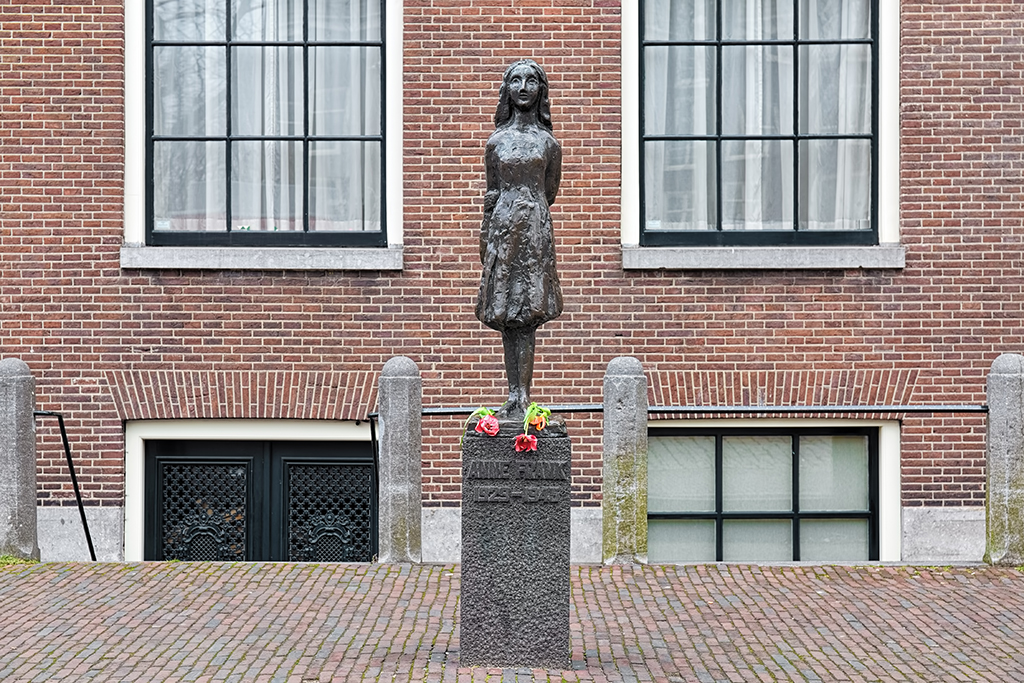
The reinvention of Anne Frank began with the publication of her diary in the United States in 1952. To make what Anne herself initially referred to as ‘the unbosomings of a thirteen-year-old schoolgirl’ more attractive to a wider (non Jewish) audience, the diary underwent a process of Americanisation, bowdlerisation and sentimentalisation.
This process extended even further with the dramatisation of the Diary of Anne Frank on Broadway in 1955 and the release of the Hollywood film (adapted from the stage production) four years later. Whilst both the play and the film were critical successes, neither captured the true essence of who Anne Frank really was.
Neither Susan Strasberg on stage, nor Millie Perkins on screen came close to capturing the mercurial and precocious young woman whose words have fascinated and inspired so many. Instead of highlighting her particular qualities, the version of Anne Frank presented to the world was a universal figure, designed above all to appeal to American youth.
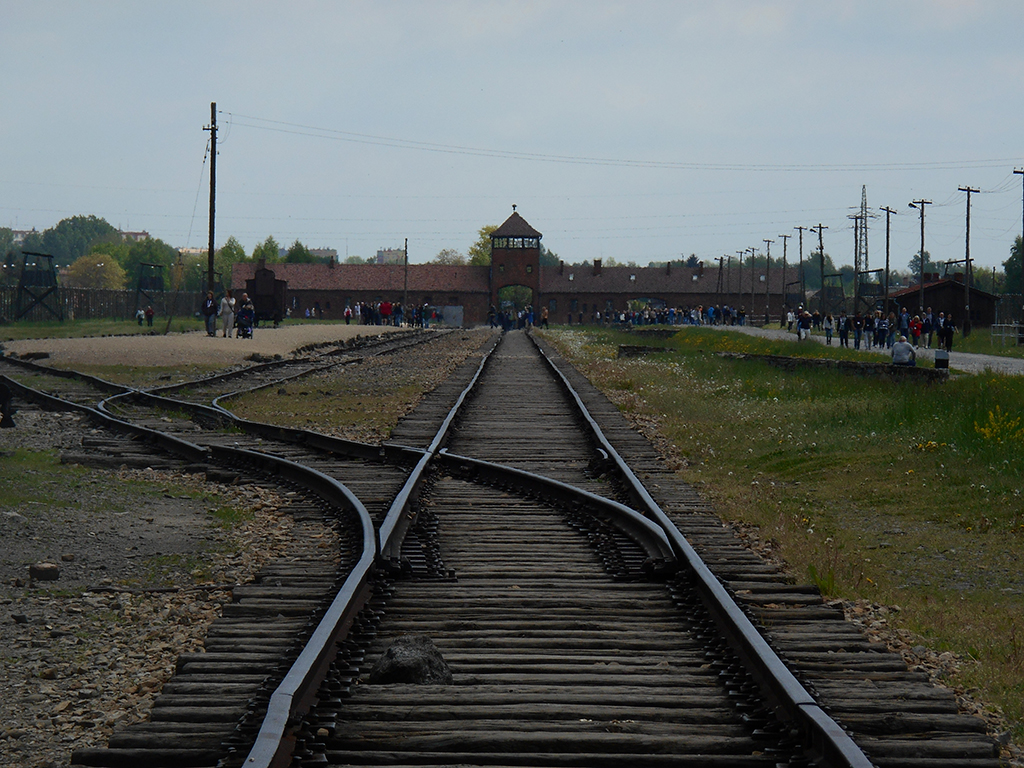
This distorted, reduced, infantilised and decontextualised figure was even furnished with a happy ending. In true Broadway and Hollywood style, the adaptations of her story conclude with those lines in her diary about believing that people were good at heart.
However, we know that in reality, there was no happy ending. As such, the decontextualising of her good-at-heart passage represents the literary equivalent of plucking a rose from a bed of thorns. The impact of that decontextualised passage has nonetheless been enormous, as from it, she has come to be recognised as a universal symbol of hope and forgiveness.
In recent years, the story of Anne Frank has been subject to literary interpretations, or re-imaginings, most notably Philip Roth’s novel The Ghost Writer (1979) and Sharon Dogar’s Annexed (2010).

Whilst both are written with a degree of sensitivity, neither help us to understand the true story, that of a life of great promise cut tragically short in the most terrible of circumstances.
For me, as a guide, it is important to distinguish between the crafted image of Anne Frank and the real person. Therefore, on The Holocaust Remembered tour, we take in the locations which serve to inform us about her real life and the circumstances of her death.
In a sense, Anne Frank lives on through her diary. However, we know that she isn’t alive, as this ordinary, yet extraordinary young woman was buried in a mass grave in Bergen-Belsen in late February 1945. That is what makes her story so unbearable and yet so fascinating. Furthermore, it is what makes this tour such an emotional, yet rewarding experience.
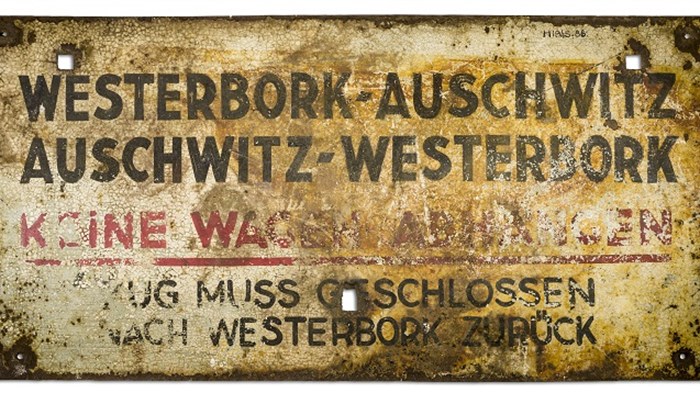
Belgium: Beauty Nestled Between France, Germany and the Netherlands.
With Easter just around the corner, we decided that we’d like to dedicate some time to acknowledge one of Europe’s sweetest countries, and no, we don’t just mean because of its small size…
If you’re looking forward to tucking into some Easter eggs this weekend, you’ll certainly be intrigued by the fact that Belgium produces a whopping 220,000 tonnes of chocolate per year! But that’s not all that this wonderful country has to offer, from canal side cities, to beautiful beers, almighty Christmas markets and coastal treasures, you’ll certainly not be bored in Belgium.
Dig into our blog, and see why Belgium should not be overlooked when planning your next visit to Europe.
Food glorious food!
Belgium is renowned for its famous variety of delicious delicacies, from the obvious traditional chocolates to deep-fried frites, whilst in Belgium, be sure to indulge in some tasty treats…
As we all know, Belgium is celebrated for its chocolate. There are over 2000 chocolatiers in the country, which is also home to famous brands such as Côte d’Or and Belvas, and Brussels airport is the largest chocolate selling point in the world.
The delicacy has been associated with the country since the 17th century and since then the industry has remained rife. So, as you saunter the streets in Belgium, ensure you pay a visit to a traditional chocolate shop, for a taste sensation you’ll never forget!

Chocolate is not the only sweet treat that the country can claim though, it is also home to the wonderful Belgian waffle. There are two types of Belgium waffle, the Brussels and the Liege. The Brussels waffle is rectangular and bigger than the Liege.
They are also crispy on the outside and light and airy on the inside, and traditionally served topped with whipped cream and strawberries. The Liege waffle is more oval shaped, they are softer, doughier, a lot more flavourful and sweeter, meaning that they are often served without toppings. We’d definitely recommend trying both types whilst in Belgium!

And, if you’re more of a savoury person, you certainly need to ensure that you indulge in some frites. Although the French claim to have invented french fries, the delicious delicacy can actually be traced back to Belgium. It is rumoured that the potato based delights inherited the name the french fries during WW1, when American soldiers, thinking they were in France, called them french fries instead of fried potatoes.

So, if you’ve had a few too many Belgian beers, or you need something to keep you going as you explore the many wonderful streets of the Belgian cities, frites are certainly the way to go!
But where can we find all these tasty treats, you ask?
Well, Belgium is also home to some pretty amazing cities. From the fashion capital of Antwerp, to the canal side city of Bruges, the seaside resort of Ostend and the hidden gem that is Ghent… all waiting to be explored.
Antwerp, one of Belgium’s ‘coolest’ cities, has become increasingly popular with tourists over the past few years, and it’s not hard to see why… Home to Europe’s second largest port and regarded as the world’s diamond capital, Antwerp boasts a lively shopping scene, classic architecture and a host of trendy cafes and coffee shops, making Belgium’s second largest city the place to be.
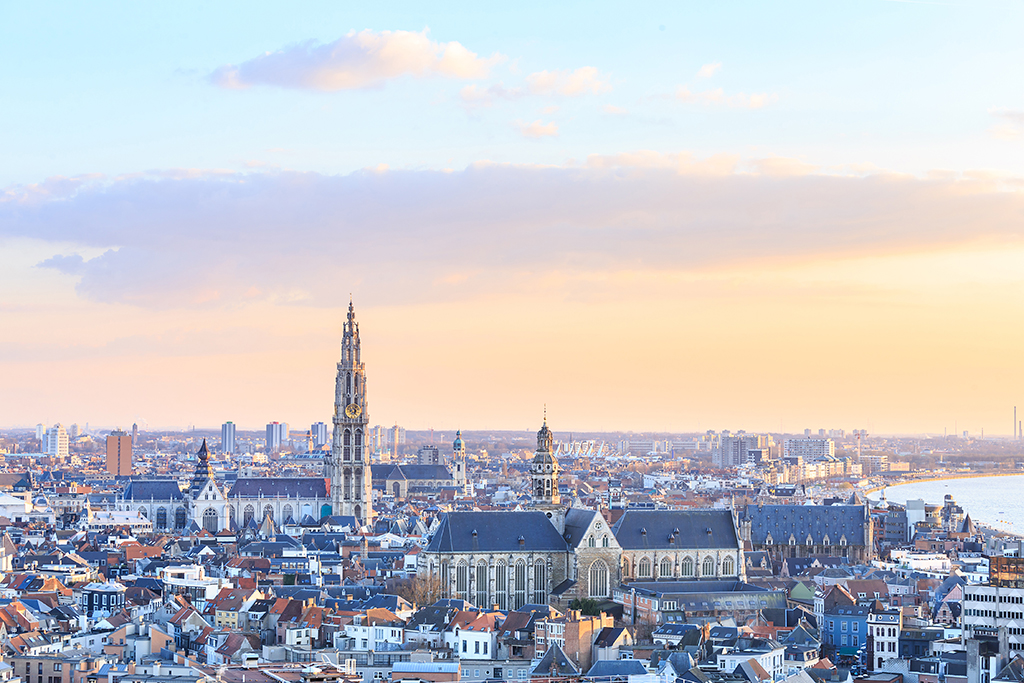
Belgium’s most underrated city is quite possibly glorious Ghent. This hidden gem is a marvel to behold. Small and cosy, the University City is full of spectacular sights, marvellous museums, and like Bruges, pretty canal side architecture. It’s walkable and the city’s cobbled streets are super easy to get around.
Also, as Ghent is not yet as popular as its neighbouring Bruges and Antwerp, the town is not full of tourists, giving it a calm and welcoming feel and allowing you to take in the city’s sights at your own pace… But hurry, before everyone realises just how amazing Ghent is, which we doubt will be long.

Ostend, the ‘Queen of Belgium’s seaside resorts’, is definitely on our list of places you must visit. The coastal city features five and a half miles of sandy beaches, plus a fantastic promenade lined with shops, bars and restaurants which serve spectacular seafood, and many museums that must be explored.
Last, but certainly not least, we have to mention the Beautiful Bruges, the golden child of Belgian tourism. Bruges is a truly beautiful city and has been popular with tourists for many years. Being the focal point of the hit movie ‘In Bruges’ and being one of the world’s best preserved medieval cities certainly helped the canal side city earn its status. But with so much to see, from the Belfry to the Beer Wall, Basilica of Holy Blood to pretty canals, and with an all-round amazing atmosphere, we’re not surprised that Bruges is so popular.
Belgian Beer & Spirits
With over 180 breweries in the country, producing over a thousand different types of beer, it’s certainly safe to say that Belgium is a haven for those with a taste for the beverage.
There’s something for everyone, with a great diversity of flavours from sweet to fruity, to bitter or spicy. And, as an added novelty, almost every beer is served in its own unique glass, which is said to bring out the exclusive flavours and tastes of the different beers, making drinking Belgian beer an experience as well as a taste sensation.

The beer glasses also make for a brilliant souvenir and can be bought from almost any gift shop in the country. One of the most distinctive glasses is that of the Kwak beer, shaped like a vase, it has a rounded bottom, meaning it can’t stand without its unique wooden holder – make sure you order one and check it out whilst in the country.
Possibly the most popular types of beers produced in Belgium are the Trappist beers, and there are only eleven brewers in the world that can claim this prized label, six of which are located in Belgium. To be able to claim to be a Trappist beer, the beer must be produced by Trappist monks, in a Trappist monastery and it is a century’s old tradition. There are many different types, but the Orval, Westvleteren 12 and the Westmalle Dubbel are some of the favourites.
Not only do the beers range in flavours, the way in which they are produced, and the vessel in which they are served, but they also range from a low alcoholic percentage to a whopping 11-12%, so be careful not to have too much of the stronger stuff, but do ensure you enjoy a tipple or two of the amber nectar…
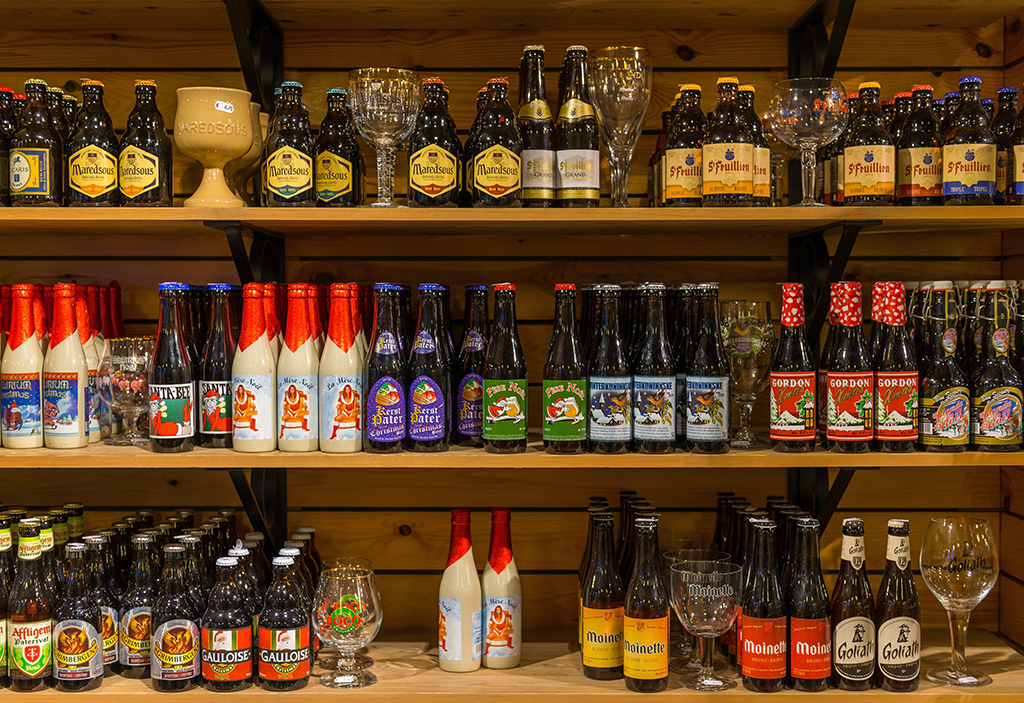
As well as beer, Belgium is also famous for Genever. Pronounced ‘Juh-nee-ver”, Genever is a flavoured spirit, which is often referred to as the ‘grandfather of gin’, as it is a juniper flavoured drink. It has been Belgium’s traditional spirit for over 500 years and not a lot of people know about it, so be sure to give it a try when you visit this beautiful country
Christmas Markets
Finally, how could we forget the festive markets? From the month of November, right through to the New Year, the cities of Belgium are transformed into fairy tale market places.
Pretty lights, festive decorations, Christmas trees and even ice rinks line the streets, as visitors flock from near and far to do their Christmas shopping. Browse the many stalls, all selling a wonderful array of traditional gifts, whilst you Indulge in some tasty treats from the many street food stalls, enjoy a Belgian waffle washed down with a warm hot chocolate, or enjoy a tipple of two of mulled wine.

Whilst Bruges, Lille and Ypres etc., all host some amazingly magical markets, Brussels Christmas market certainly is a show stopper. Not only does Brussels house fascinating monuments and amazing architecture, it really does have one of the best Christmas markets in Europe. With over 200 market stalls spanning from the Grand Place, the capital city is brought to life with twinkling lights, wonderful aromas and gorgeous garlands. A Ferris wheel allows you to see the markets from above, and a huge ice rink provides fun for all the family.
If you’re a fan of the Christmas spirit and you want a change from the busy shopping malls this holiday season, take a look at our Belgian Christmas Markets.
So, as you can see Belgium is certainly not boring, but don’t just take our word for it. Head over to our website and take a look at the tours we have on offer to Belgium, one of Europe’s sweetest countries.
Paul Reed: Exploring the Secret Wehrmacht Bunker
Getting prepared for new battlefield experiences is all part of the work Battlefield Guides carry out in readiness for the tours we do for Leger Holidays.
When there are new tours we always go out on a Battlefield Recce to check the fine details and make sure it all runs smoothly for when we have the groups with us. It’s all part of the professionalism with which we all approach how we operate Leger Battlefield Tours.
I was recently in Germany on such a Battlefield Recce with fellow Battlefield Guides David McCormack and Bill McQuade for the new Peenemunde, Baltic Coast and Berlin tour, which has its first departures this summer. This promises to be an excellent tour looking at different aspects of Third Reich history from the ‘Strength through Joy’ site at Prora to the development of secret weapons at Peenemunde, which will include for the first time having access to the actual rocket test stands and launch sites.
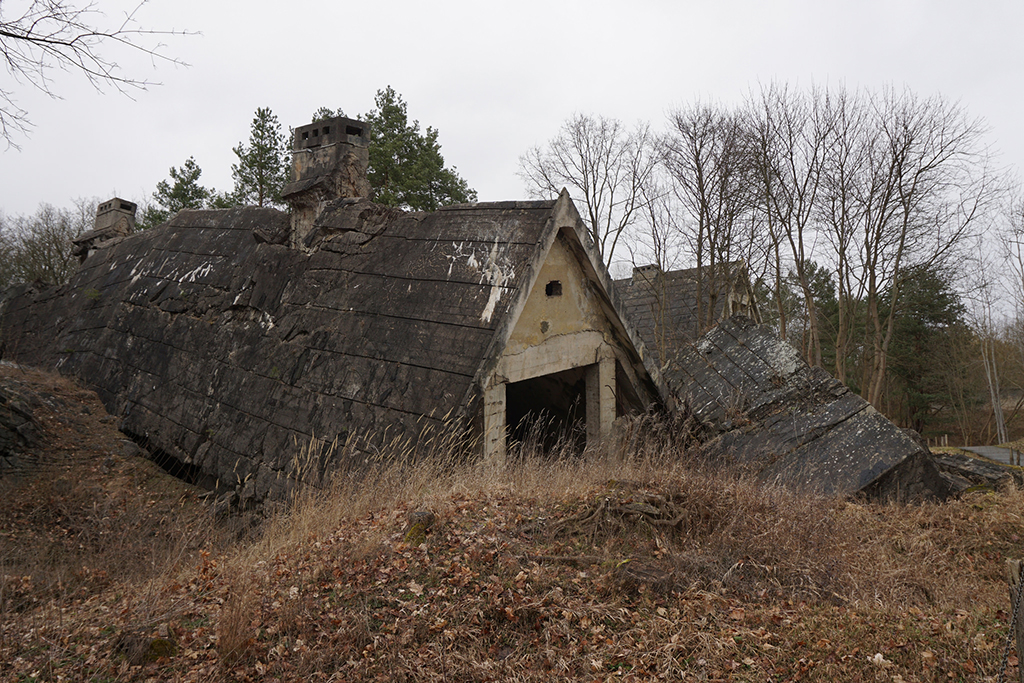
However, one of the highlights of this Recce was our visit to Zossen-Wünsdorf to the site of Oberkommando der Wehrmacht: the Headquarters of the German Wehrmacht. The Wehrmacht wasn’t just the German Army: it was the overall governing body of the Army (Heer), Airforce (Luftwaffe) and Navy (Kriegsmarine). All of these had personnel at Zossen in a massive series of underground bunkers and tunnels.
While some wartime planning was done here, it was in essence the wartime communications hub of the Wehrmacht, a site once buzzing with the orders, commands and information relating to every key battle in the war from Poland to Stalingrad to the final battles.

Zossen-Wünsdorf is a ‘book village’ where there are a large number of second-hand bookshops, and we started our tour there with the group that runs the bunker site. Our guide took us in through the main gate, dating from Cold War days, but which immediately put us into the heart of the above ground bunkers.
These all resemble houses as they were used to disguise the site as a residential area; in reality they were the way into the underground structures used by the various branches of the Wehrmacht. Some had been damaged in bombing but most had been blown by the Russians. They stand as decaying monuments to the failure of the Thousand Year Reich.
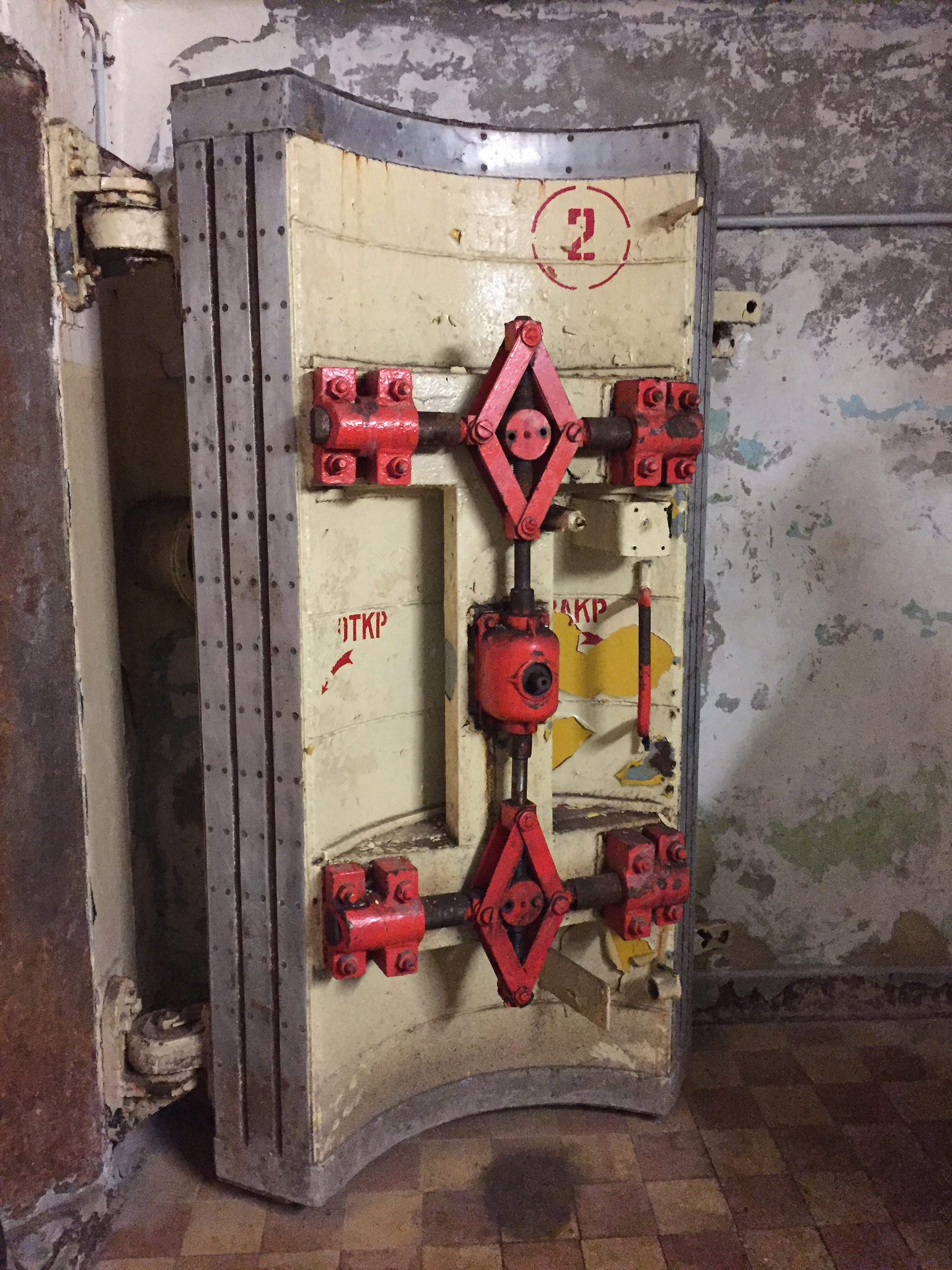
From here we went through the woods to the entrance of the main underground section. Initially we went through some Cold War period doors, which were amazing in their own right, and then into what was the entrance area during WW2.
It was very wide and when we questioned this, it was so that small vehicles such as Kubelwagens could drive in and enter the lift to take them to the lower levels. It was at this point we began to get an idea as to how big this site was!
From here we made our way through the tunnels, rooms and corridors. Because of occupation as a Soviet Airmobile Headquarters during the Cold War, the site is in very good condition and easy to access: it is fully lit and there are easily manageable stairs. No crawling through tunnels or roping down holes! Health and safety on these visits is something we do have to think about as Battlefield Guides!
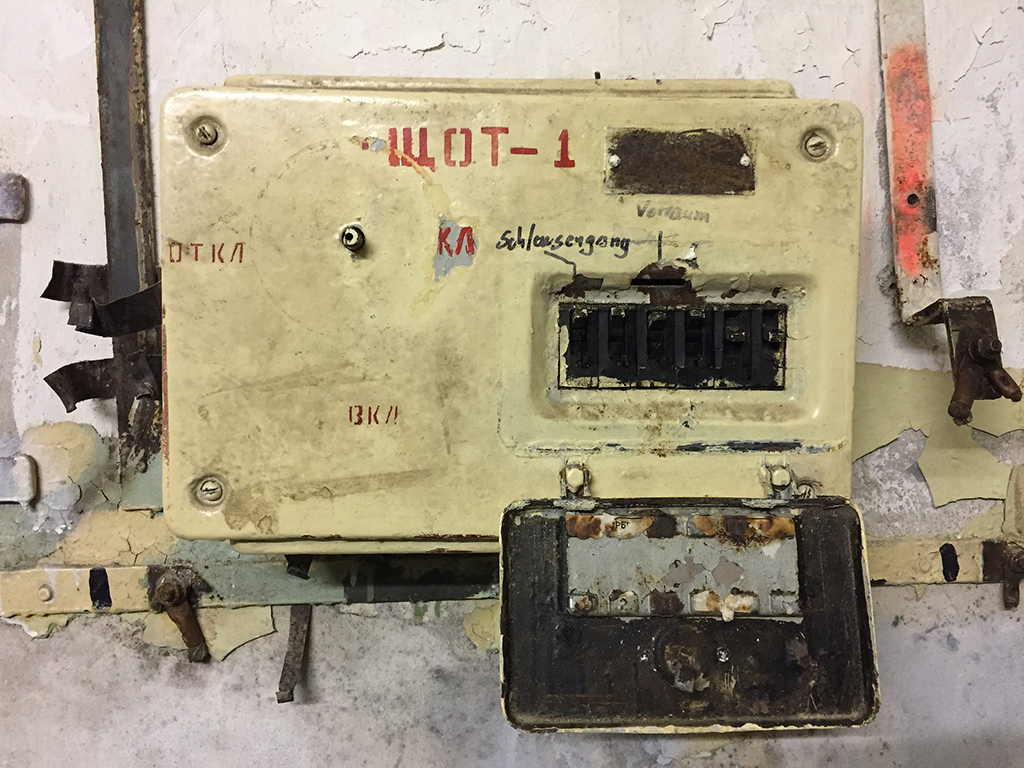
As we made our way through the bunker site we got some sense of the importance of it and also the scale, and just how modern it was. Having an integrated internal messaging system, it had the WW2 equivalent of email whereby everyone in the complex could message others through a message pod system powered by compressed air! Anyone in the complex could speak to any headquarters on any battlefield.
As you walk the corridors you just wonder what it must have been like when the surrender at Stalingrad came through or when it was clear the fronts in both East and West were collapsing.

Coming back outside from the Wehrmacht Bunker we realised we had been underground for well over an hour, seeing a site not normally open to the public because of the safety issues and which we know will fascinate those who travel with us on this new tour that focuses on many areas of WW2 history we have not been able to discuss in such depth before.
Never miss a post from Paul. Sign up to receive alerts.
Paul Reed, our Head Battlefield Guide, will publish regular blogs including personal stories, new tour updates and plenty of interesting and factual information about the Battlefields of Europe and beyond. Sign up below and receive email alerts keeping you up to date with Paul’s blogs.
[iframe src=”//wwwuk.msgapp.com/af2?LinkID=CH00096178eR00000060AD” width=”500″ height=”320″ frameborder=”0″]
Best live events to catch in 2017
With some of the best live events of 2017 in our programme, if you’re looking for a trip with a little more than just stunning scenery, we’ve got you covered.
From high-speed action at the famous European F1 circuits, to the classical concerts of Andre Rieu and Andrea Bocelli and the grand finale of the Tour de France. We’ve got something for everyone looking for a live experience that will stay in your memories for a lifetime. But don’t just take our word for it, take a look at what to expect from the best live events of 2017, and see what takes your fancy…
Formula 1
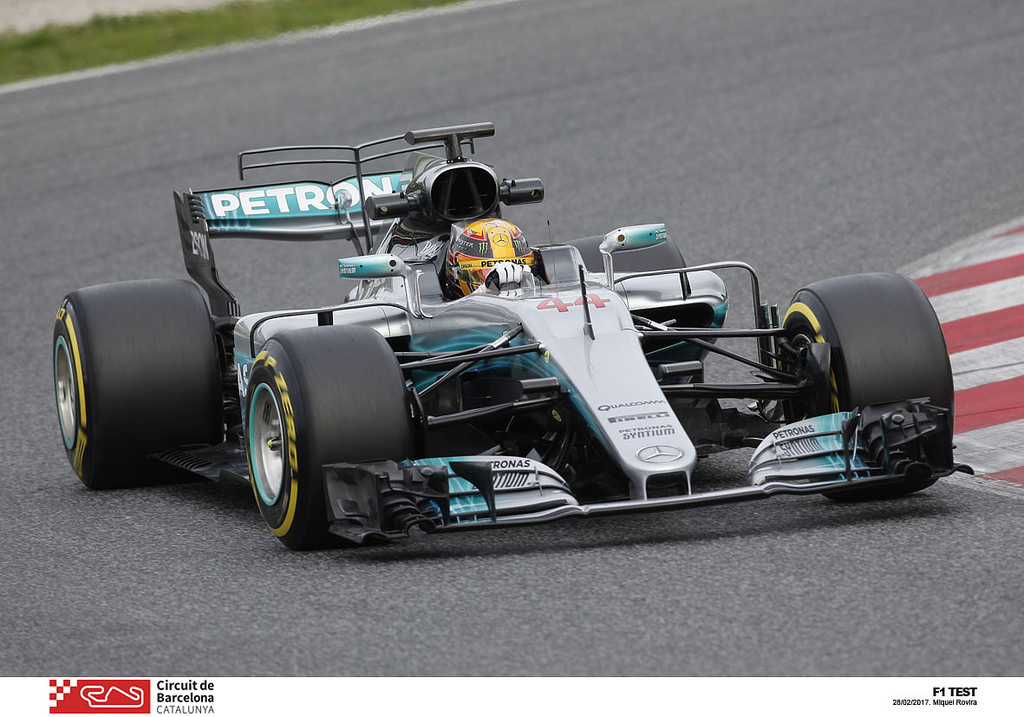
After a Mercedes dominated season – which saw the now retired, Nico Rosberg finally beat Lewis to become the 2016 world champion – what can we expect from the 68th round of the sport?
With twenty races on the calendar this year, new regulations being introduced and new owners- Liberty Media, following Bernie Ecclestone’s departure after forty years running the sport- we’re sure to be in for a thrill.
New Year, new start, new regulations, yes, yet again we see major car updates coming into play. In 2017 the cars look a lot meaner, thanks to the wider tyres and revised bodywork. They’re also expected to be a lot faster, with teams hoping to take up to five seconds off their current lap times!
As well as regulation changes, there has also been a stir in the driver line ups. After an extremely extended ‘silly season’, which saw Nico Rosberg retire mere days after winning his first, and, well, only, championship, we were all left to wonder who would join his team mate Lewis at the mighty Mercedes.
With the likes of Fernando Alonso and Pascal Werhlien being rumoured to secure the seat, Toto Wolf and his team decided that the Finish driver, Voltari Bottas was the man for the job.
We also have some new-comers entering the sport, such as the likes of Stoffel Vandoorne, former GP2 champion, replacing the now retired Jenson Button at McLaren. And, with drivers like Max Verstappen already being one to watch, along with the uncertainty of how teams such as Ferrari and Red Bull will fare with the new car updates, we’re in for some ‘edge of the seat’ excitement and brilliant on track battles.
Will we see a shake up on the grid and will the Silver Arrows finally be thrown from the top spot? Although, at the moment, it’s a difficult question to answer, if the results of the pre-season testing are anything to go by, Ferrari certainly look like the team to watch, with Williams and Red Bull not far behind.
Wanting to see how the season will play out? Why not join us on one of our European F1 tours, and witness the on track action first hand.
Andre Rieu
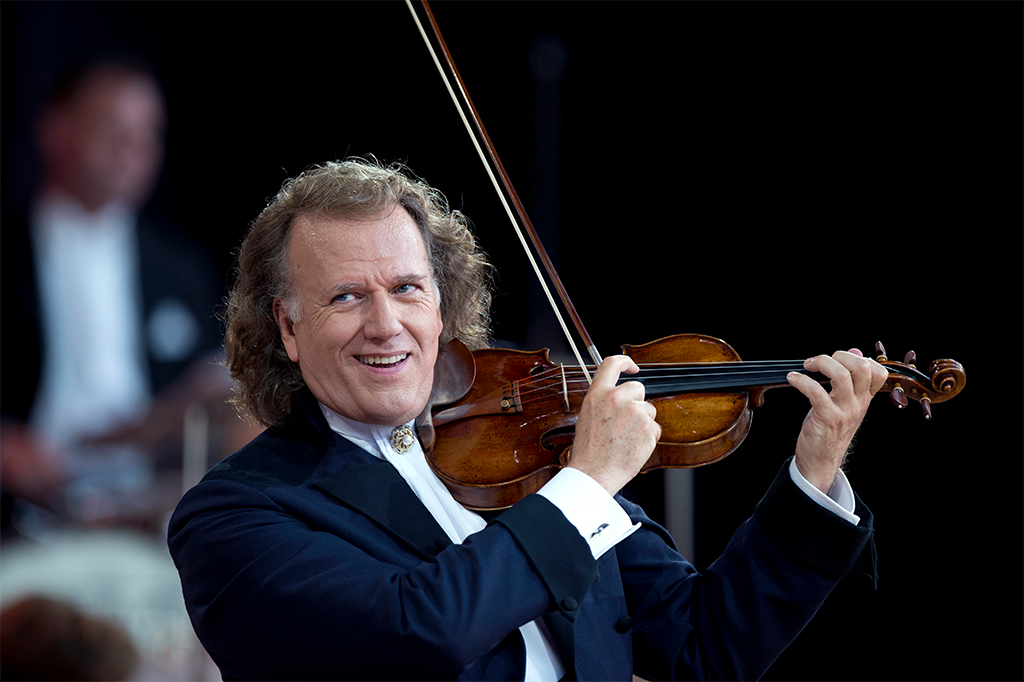
The King of Waltz has inspired a generation with his beautiful music, but it’s his sheer love for his fans and his adoration for what he does that draws people in their millions to concert halls and arenas, all over the world.
Best known for creating the waltz-playing, Johann Strauss Orchestra, his early fascination with orchestra began at the tender age of five, when he first started playing the Violin. From then on he followed his love of music through school, studying under the likes of Herman Krebbers. But it wasn’t until university that he decided to pursue the waltz, and boy are we glad he did!
Forming in 1987, it’s no wonder that the Johann Strauss Orchestra’s range of work is astounding. And, over the years they have turned classical and waltz music into a worldwide concert touring act.
Providing fans with an evening of spectacular showbiz, humor and audience interaction, Rieu’s ability to speak six different languages allows him to tap into the local feel of the place that he is performing so that each and every concert has an intimate feel, which you would struggle to find anywhere else!
So, if you’re looking for an evening filled with beautiful music and utter and sheer joy, then you do not want to miss out on one of Andre’s concerts. With Vienna on our programme for 2017, enjoy an evening with the King of Waltz, on one of our fully escorted tours.
Moto GP
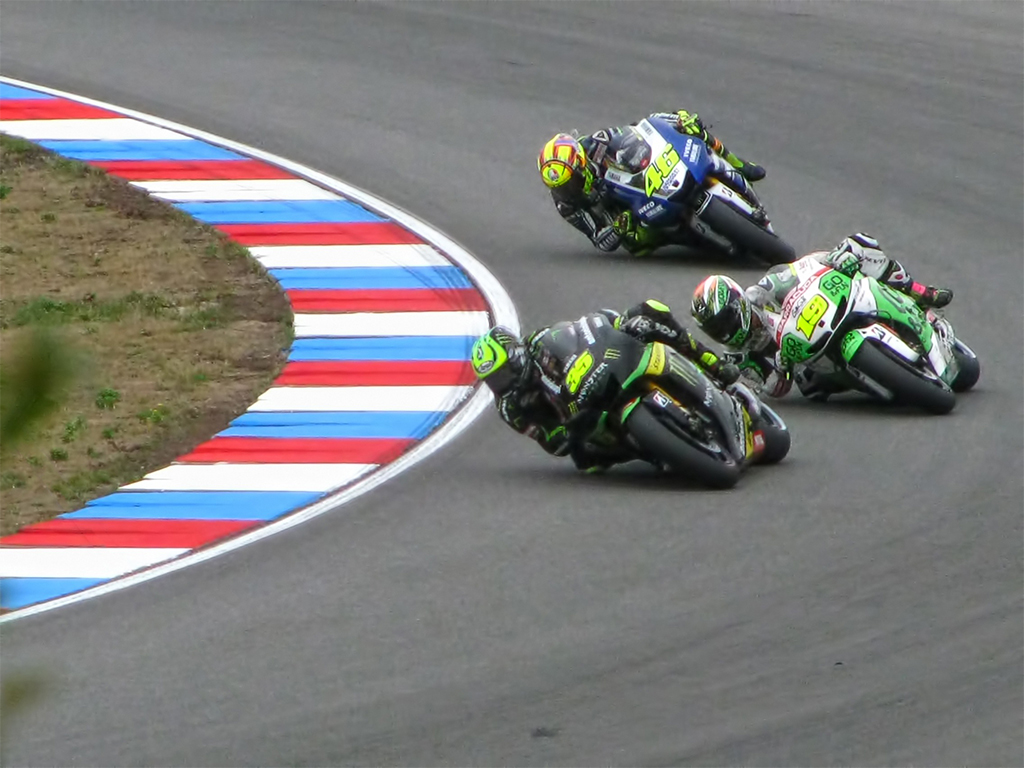
After an exhilarating 2016, with a total of nine different race winners, fans from all over the world have been left wondering just how the 2017 season is going to play out.
With over half of the twenty-three drivers starting the season in new teams, we’re ready to see familiar faces in new places. With Lorenzo’s move to Ducati meaning that he and his two main rivals, Marquez and Rossi, will all be riding for three different manufacturers, we’re sure this season will make for an exciting watch.
Over the last three years, Marquez, Rossi and Lorenzo have finished first, second or third in the championship, albeit, not always in the same order. But, it wouldn’t be a surprise for any of us if the trio were to pull it off again this year. It’s certainly no guarantee that Marquez will be able to retain the championship that he regained last season, but, with such a strong field, we couldn’t possibly guess who will come out on top this season.
One thing we can say, with the preseason testing already underway, Rossi’s team mate Maverick Viñales, certainly looks like one to watch this year, posting some of the fastest times in testing at the moment. Rumoured to be the next big thing in Moto GP, he was a rookie in the Moto GP class last year with Suzuki, and could potentially be a threat to the triumphant trio.
New to our program this year, we are offering guests the opportunity to join the action at Assen, on our first, fully escorted, Motogp weekend break.
Redesigned in 2003 to comply with safety regulations, the original Assen track was built in 1955 (not including the road circuit that was first used to host racing in 1925), and had a length of 7705 metres. Part of the redesign involved shortening the track, which now has a length of 4555 metres, extending gravel traps and adding in a mixture of flat out and slow corners to make the racing more varied and exciting. However, there is one part of the original track which remains unchanged, and since it was first built, the location of the finish line has remained in exactly the same spot.
Andrea Bocelli
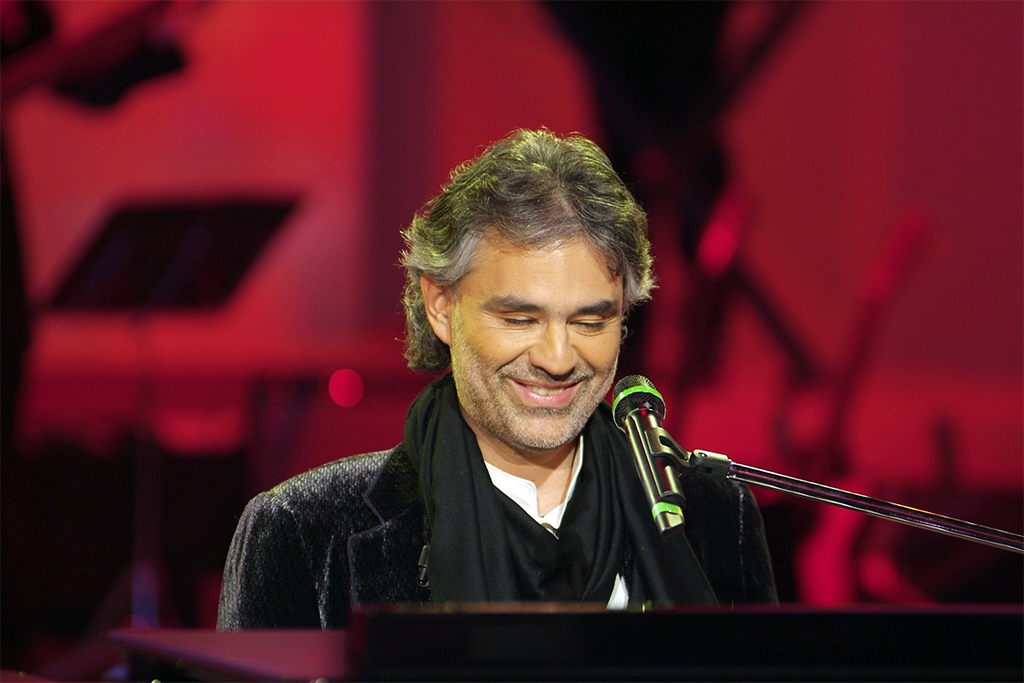
Registered blind after a footballing incident aged just twelve, there was no stopping Bocelli, who was already a confident musician. Having learnt how to play the piano, saxophone, trumpet and guitar, to name a few, the Italian is also blessed with a tone that is versatile and powerful, and which ultimately led to his big break in 1992.
This came after a tape of him singing, fell into the hands of arguably one of the most popular classical artists in history, the one and only, Pavarotti. They went onto perform a duet together, which led to Bocelli becoming a household name throughout Europe, and then the world.
Since his initial success he has gone on to record fifteen solo studio albums and nine complete operas, selling over 80 million records worldwide! With massive hits, such as ‘Time to say Goodbye’, a star on the Hollywood walk of fame and a Golden Globe to his name, it’s no doubt that Bocelli is a classical music legend.
In 2006, helped by funds from the star himself, his home town commissioned the opening of the Teatro del Silenzio. Named the Theatre of Silence, the Italian open air amphitheater remains literally silent all year. However, on one spectacular night each summer, the Tuscan hills of Lajatico are brought to life, as Andrea Bocelli returns to his home town, with an abundance of famous guests, to provide fans with an evening of moving music, in the warm evening breeze. And this year, you could be there, too, as we head off to Italy for this incredible Tuscan show.
Tour de France
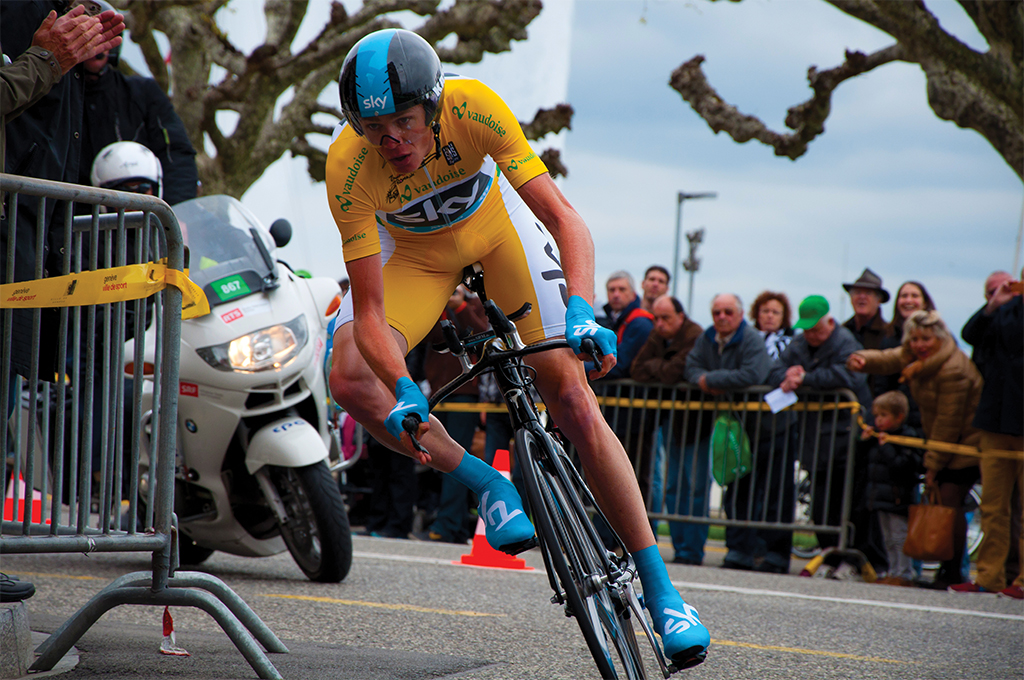
This year, the Tour de France 2017 will return to Germany for the first time in thirty years, as the Grand Départ gets underway from Dusseldorf.
The 104th round of the sport will see the riders being put to the ultimate test, as the men are separated from the boys, when they tackle Frances’ five mountain ranges, Vosges, Jura, Pyrenes, Central Massif and Alps, in that order.
Before they actually reach France, though, they will have to tackle the tough roads of Belgium and Luxembourg. From there they will spend many days enduring various different terrain, gradients, and time trials etc., before the traditional final day in Paris, with the finish along the Champs Elysee.
In 2017, join us in Paris and witness the grand finale of what is thought to be one of the most diverse and exciting routes the Tour has seen in years. With the likes of Chris Froome, who can climb with the best of them, being poised for the win again this year, it certainly is an exciting event to witness.
But, which live event has you all geared up for 2017? Let us know in the comments!
Formula 1 Vs. MotoGP: Four Wheels or Two?
Now, we don’t want to undermine the love that we have for things such as family, partners, friends, maybe even pets and personal belongings… but, does anything really compare to the passion you have for your sport?
How many times have we been known to utter the words ‘after the race’, or turned down plans because, lets face it, if it’s on the TV, we’re watching it. Maybe you’ve even combined two of your loves, treating your other half to a romantic break, enjoying a race weekend in Europe. If so, you’re our sort of person.
But, we’re about to get controversial. Kind of like a popular card game, we’re pinning two of Motorsports greatest against one another. So, what is better? Four wheels or two? Let the battle commence! Formula 1 Vs. MotoGP … who wins? Let us know in the comments.
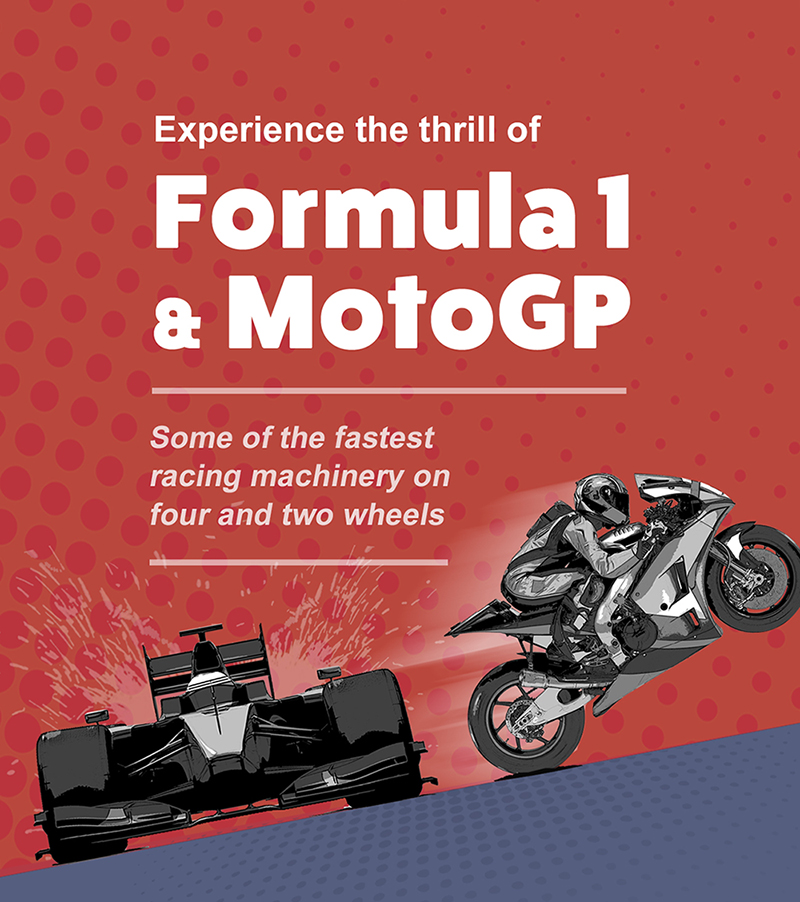
Formula 1 cars and MotoGP bikes are powerful machines, built within their own regulations to produce and perfect the fastest, most streamlined piece of machinery in their field.
Every team looks to draw out that little bit of extra performance to put them ahead. Both of these unique motorsports are thrilling to watch, and the differences between four and two wheels can be seen below.
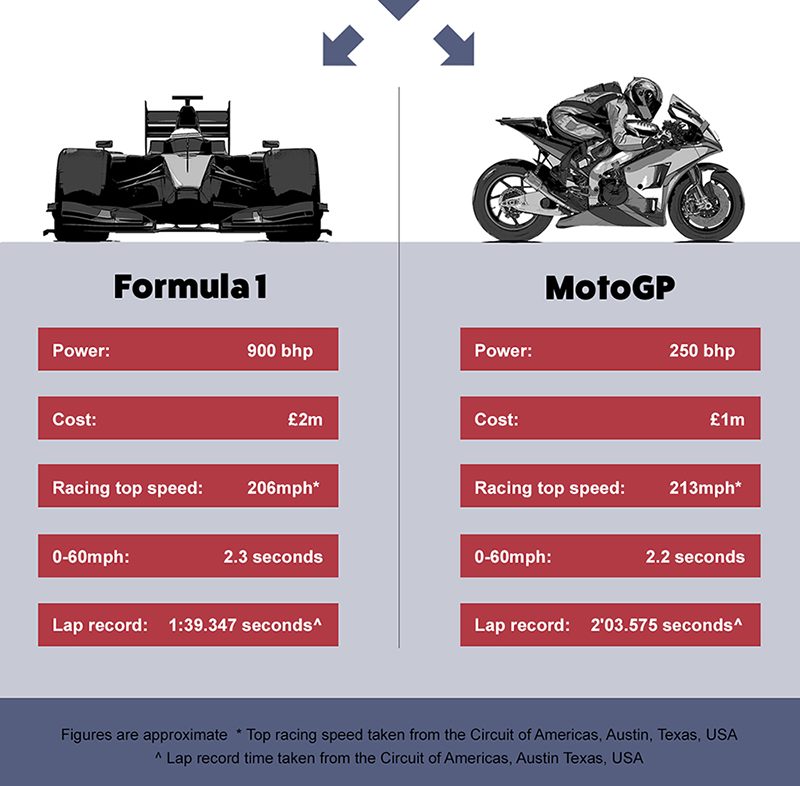
But, that’s the machines. What about the circuits? Iconic tracks make for exciting races and we’ve chosen two of our favourite to battle it out below.
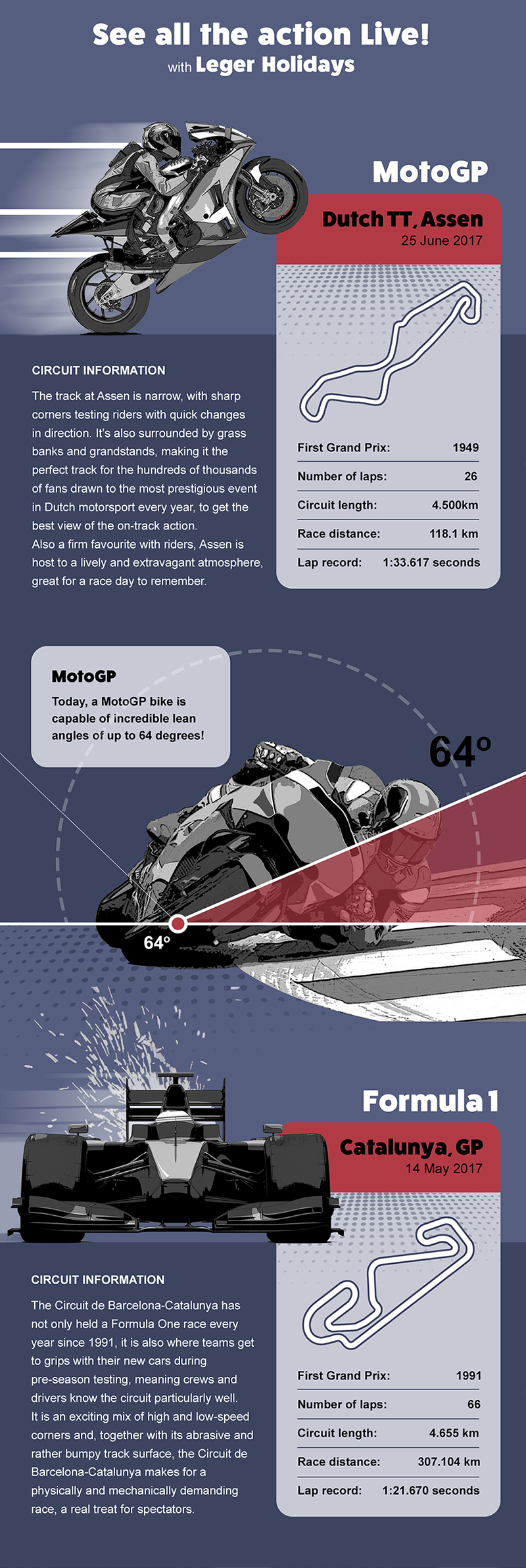
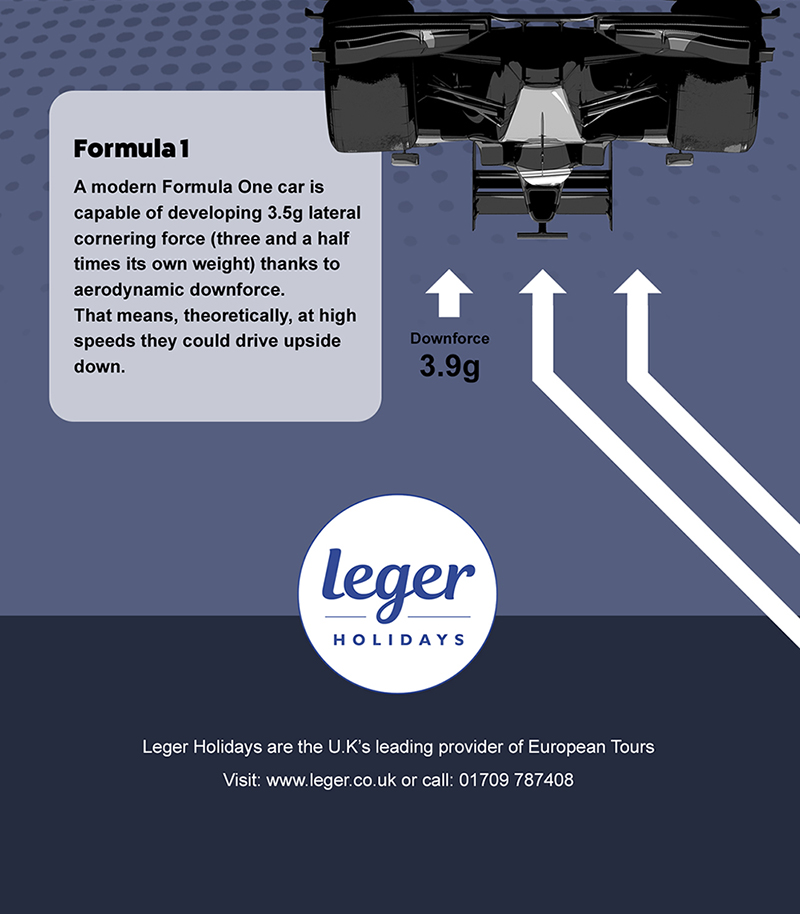
Click here to see our range of European Motorsports breaks available to book, now.
Lights, Camera, Action: Our Top Film and TV Locations in Europe
Have you ever watched a film or TV show and felt so engrossed in the setting that you wanted to pack your suitcase there and then, and set out on your own action packed adventure?
Well, what if we were to tell you that some of the most famous movie locations are right on our door step, here in Europe, and you could visit some of the world’s most famous, real life movie sets, on one of our tours? You better believe it! Take a look at some of our favourite film and TV locations we love to visit.
Prague – Casino Royale

We begin with Prague, which has a long list of movie location credentials, and it’s no surprise that directors and producers alike have chosen to shoot some of the most famous silver screen scenes here.
The capital city of the Czech Republic boasts some pretty amazing architecture, which provides the perfect back drop for any action movie, which brings us to one of the most famous action heroes of all time…Bond, James Bond.
Since the release of the 2006 movie, Casino Royale, Prague has become popular with Bond fans from all over the world, with many visiting the city in order to take snaps in the famous locations.
Some locations in Prague even doubled for scenes in Venice and Miami! The Czech National Museum was used as the setting for the Venetian hotel, and both Prague Ruzyne Airport and the Ministry of Transport, which are both portrayed as locations in Miami. However, the opening scene for the film was actually set and filmed in Prague at The Danube House, which tell us the story of how Bond gained his Double O status.
Salzburg – The Sound of Music
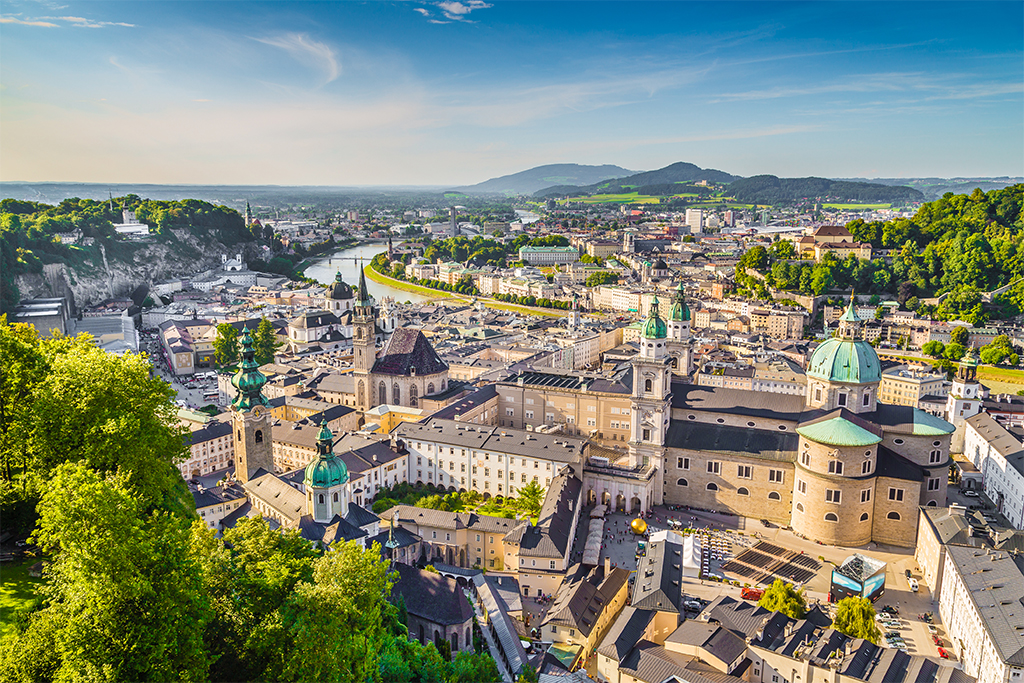
Home to the Vonn Trapp family, the fairy tale city of Salzburg is a must do in its own right. However, it has become renowned for its Sound of Music tours, with fans of this heart-warming story flocking from near and far to walk in the footsteps of Julie Andrews.
Salzburg is home to many wonderful sites, so it’s no wonder the director of the 1965 Oscar winning musical chose to shoot as many of the scenes as he could in the city itself. With an abundance of movie scenes to visit, such as the Do-Re-Mi fountain, why not take a look at our very own Austria, Sound of Music tour?
Taormina – The Godfather
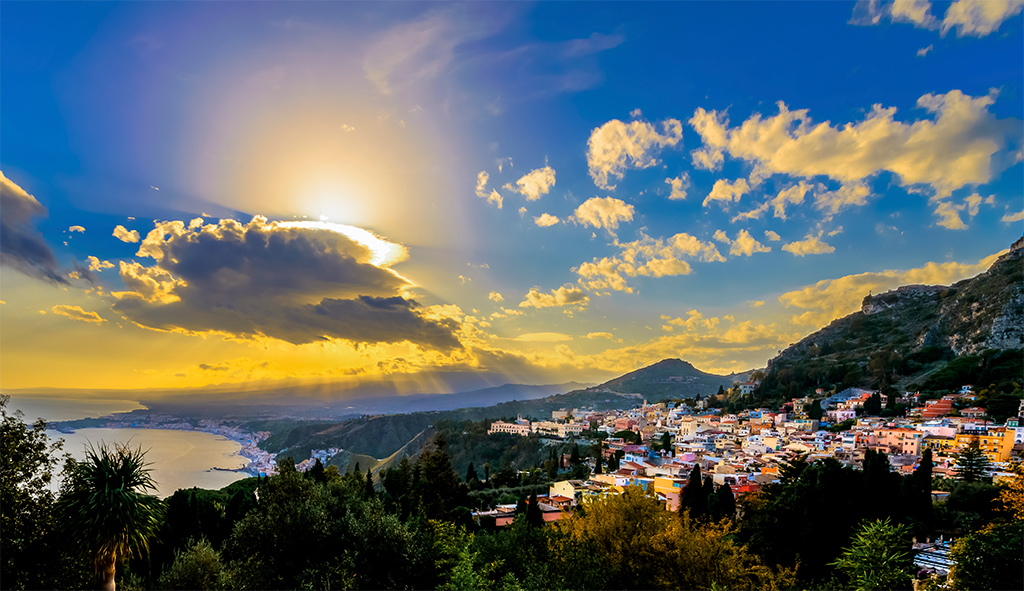
Ah Sicily, home to one of the most notorious families of all time, the Carleone family, from the hit crime series, The Godfather.
Based on Mario Puzo’s bestselling novel, which was inspired by real life events carried out by the Sicilian Mafia, there was really nowhere else for the typically Italian scenes to be filmed but in Italy itself.
Aside from its claim to fame, Sicily is truly memorising and would be enjoyed by anyone, even if you’re not a fan of the hit crime series. However, if you are a Godfather fan, why not take a tour of some of the most iconic spots of the film? Our Treasures of Sicily tour dedicates a whole excursion to the Al Pacino classic.
Dubrovnik – Game of Thrones

Stepping away from the movies, we take a look at one of the most popular TV shows of the present day, Game of Thrones. With the seventh season just around the corner, over the past few years many fans of the show have been journeying to Croatia, in the hopes of catching a glimpse of the stars, in the real life’s ‘Kings Landing’. Or, as we know it, the old town, Dubrovnik.
That’s right, the medieval town offers the back drop for the southern city in this make believe world of fire and ice, and we can see just why it was chosen. The UNESCO world heritage site is filled with wonders and the ancient stone walls of the city really give it that enchanting feel. And whilst you’re certainly not going to catch a glimpse of any dragons, who knows, you may brush shoulders with one of the shows many stars, making Dubrovnik a must visit for any GOT fan.
Verona – Letters to Juliette
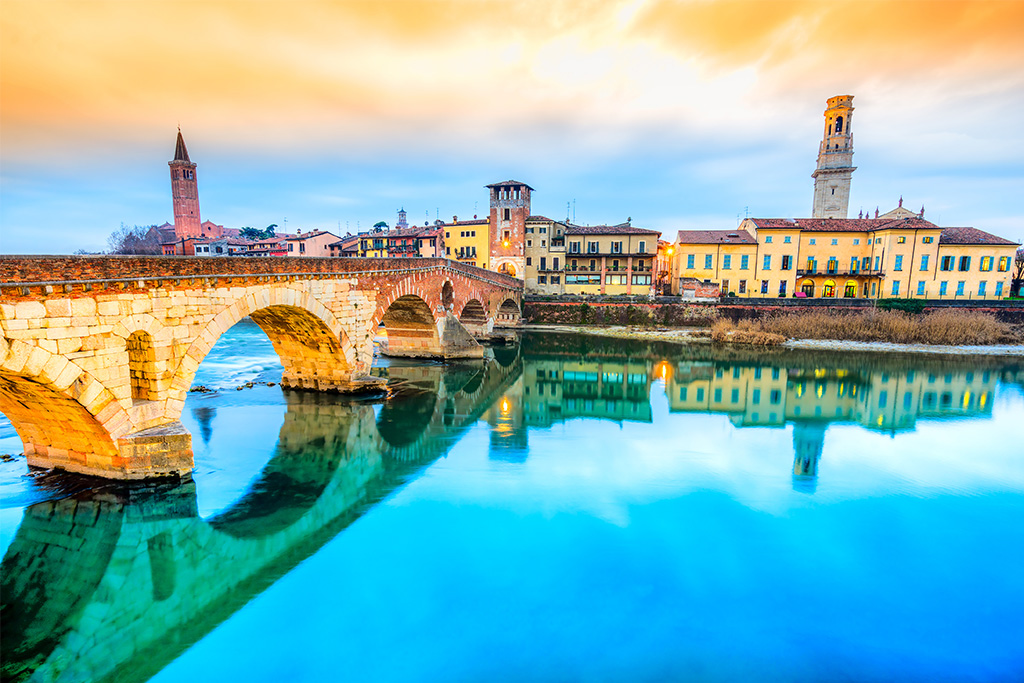
This gorgeous romantic comedy, gives you a real sense of the passion of Italy. Set and mostly filmed in Verona, the film tells the story of a writer struggling to find her muse, until, among the sights, she ends up discovering the “Secretaries of Juliet”. The “Secretaries of Juliet” being a group of women in Verona, whom spend their days replying to letters left to Juliet for love advice.
There she discovers one that was written 50 years ago, which then leads to the main character, played by Amanda Seyfried, setting off on a quest to aid one woman whose story she has become engrossed in. It’s a truly beautiful film, with some truly gorgeous scenery, as the cast travel through the Italian countryside in the hopes of reuniting two lovers.
So, if you’re looking to set the scene for your own romantic tale, Italy, and namely Verona, is the perfect place for you.
Copenhagen – The Danish Girl

The streets of Copenhagen’s Old Town set the scene for this dramatic tale. Based on real life events, The Danish Girl, was an immediate success when it was released in cinemas a little over a year ago, and it’s no surprise when you see the Oscar nominated and Oscar winning performances of both Eddie Redmayne and Alicia Vikander.
But aside from the outstanding performances, the stunning scenery of Copenhagen is also Oscar worthy, from the cobbled waterfronts, to the curving and colourful streets of Nyhavn. It really is one for the bucket list!
Bruges – In Bruges
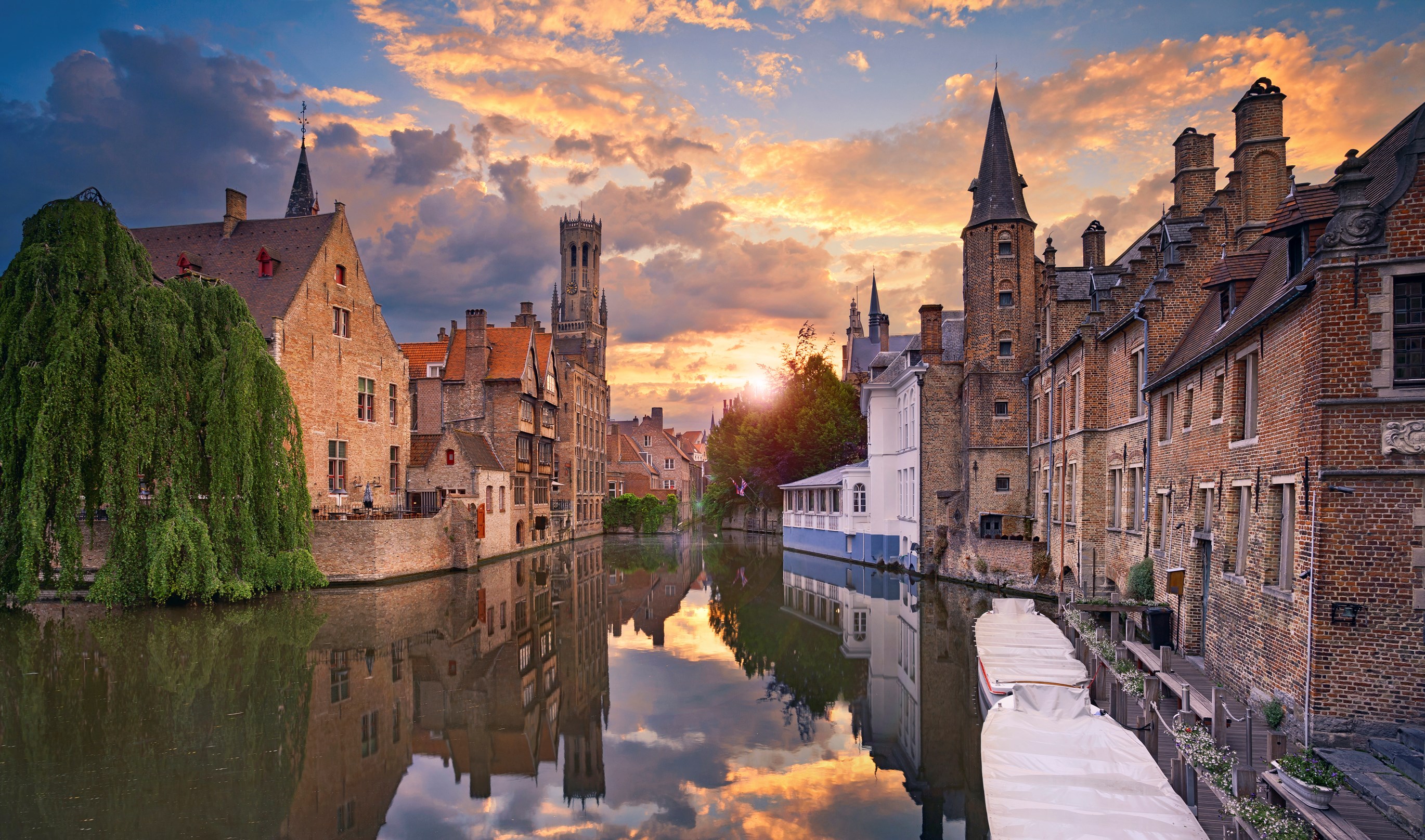
Although the 2008 film didn’t quite make the cut when it was released in cinemas, it soon became a cult classic. The film has the perfect mix of some brilliant comedy moments and an excellent script, but the real star of the show is Bruges itself.
The film follows two hit men who have been ousted to Bruges for making a mess of a job. Whilst there, the lead characters Ken (Brendan Gleeson) and Ray (Colin Farrell) take a tour of the town, visiting celebrated sites such as the Belfry and the Basilica of The Holy Blood, meaning there are probably few places that you can visit whilst there that weren’t key locations in the film.
It is the case that the movie made the medieval town so popular, that the Bruges tourist board even created a map dedicated to the dark comedy, so fans could make sure that they didn’t miss any of the famous sites whilst touring the town.
Rome – La Dolce Vita
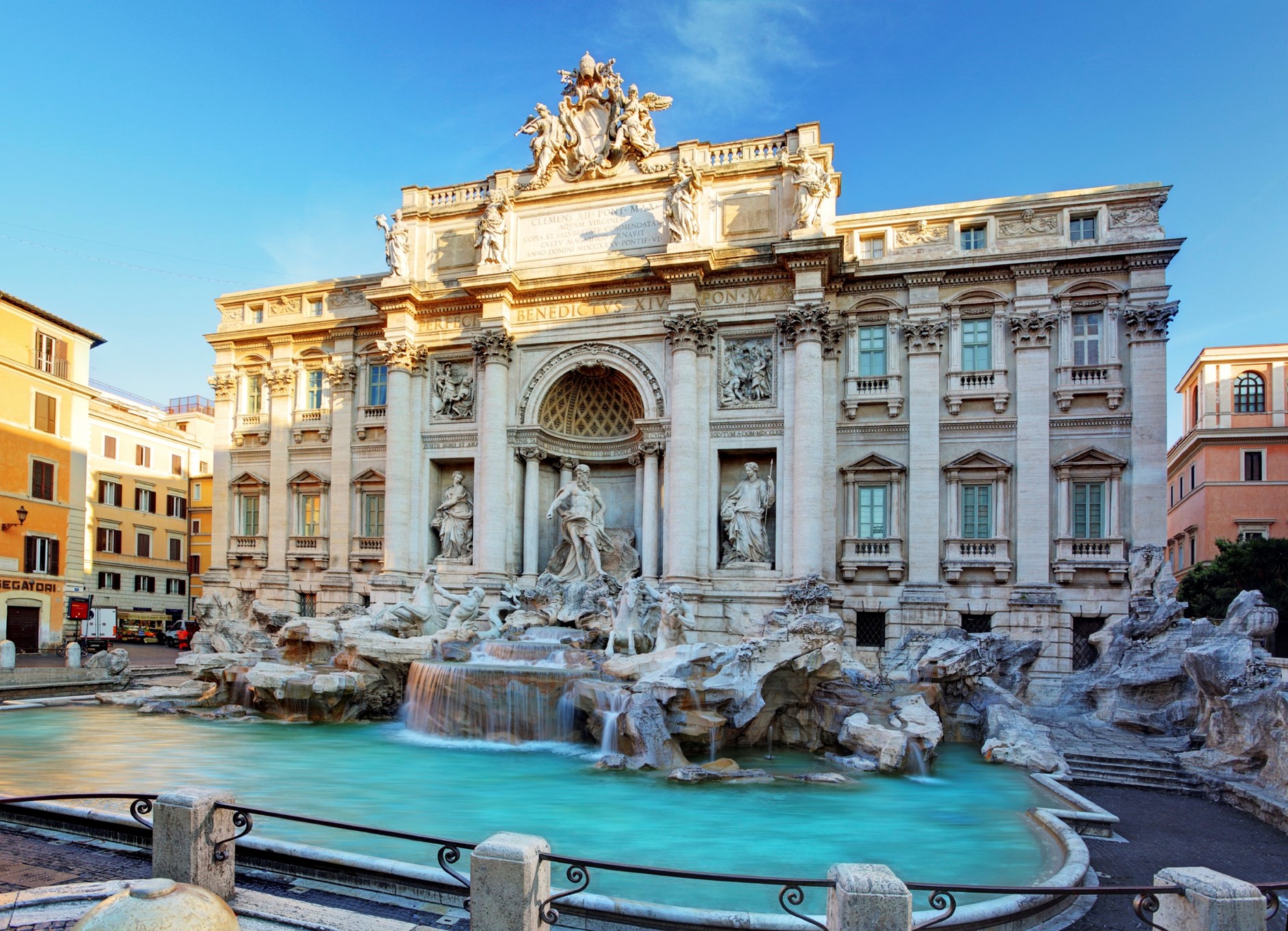
The classic black and white film follows a tabloid journalist called Marcello, whose life is torn between wanting to become an establish writer or continuing to publish profitable but meaningless magazine articles.
Set and filmed in the glamorous Roma, the film includes many of the ancient cities treasures, however the most famous scene in the film comes as Marcello meets the beautiful socialite Sylvia, played by the 1960s Swedish bombshell, Anita Ekberg.
As Marcello takes the star on a tour of Rome, we see her character plunge into the Trevi fountain in an all-black evening gown. The scene is mesmerizing, and so it’s no surprise that it attracted fans from around the globe, many of whom wanted to come and recreate the moonlight splash. However, as there’s a ‘strictly no bathing policy’ this is unfortunately not possible, but you can pay a visit to the spectacular monument and the beautiful city of Rome on one of our many tours.
If this blog has you in the mood to visit some of the most famous film and TV sets in Europe, why not star in your story on a Leger Holiday?



